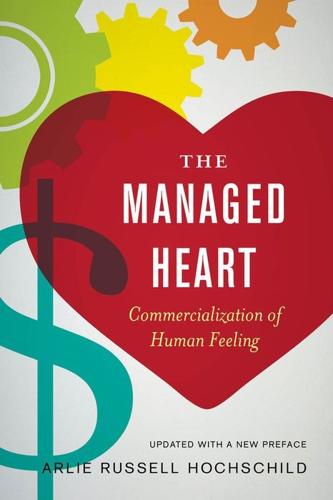
The Managed Heart: Commercialization of Human Feeling
by
Arlie Russell Hochschild
Published 1 Nov 1983
Smith, Pam "The Emotional Labor of Nursing," Nursing Times 1988 84:50-5l. 1992 The Emotional Labour of Nursing: How Nurses Care. Basingstoke, Macmillan. Steinberg, Ronnie J. 1990 "Social Construction of Skill: Gender, Power, and Comparable Worth," Work and Occupations 17 (4): 449-82. Bibliography to the Twentieth Anniversary Edition 1999 285 "Emotional Labor Since The Managed Heart," Annals of the American Academy of Political and Social Science V561 :8-26. 1999 "Emotional Labor in Job Evaluation: Redesigning Compensation Practices," Annals of the American Academy of Political and Social Science V561: 143-157. Steinberg, Ronnie j., Lois Haignere, Carol Possin, Donald Treiman, and Cynthia H.
…
Totterdell 2002 "The Effects of Performance Monitoring on Emotional Labor and Well-Being in Call Centers," Motivation and Emotion V26(N1):57-8l. Hunter, B. 2001 "Emotion Work in Midwifery: A Review of Current Knowledge," Journal of Advanced Nursing V34 (N4) :436-444. Jacobs, Jerry A. and Ronnie]. Steinberg 1990 "Compensating Differentials and the Male-Female Wage Gap: Evidence from the New York State Comparable Worth Study," Social Forces 69 (2) :439-68. James, Nicky 1989 "Emotional Labour: Skill and work in the Social Regulation of Feelings," Sociological Review 37(1): 15-42. Karabanow,]. 1999 "When Caring is Not Enough: Emotional Labor and Youth Shelter Workers," Social Service Review V73(N3):340-357.
…
The secretary who creates a cheerful office that announces her company as "friendly and dependable" and her boss as "up-and-coming;' the waitress or waiter who creates an "atmosphere of pleasant dining," the tour guide or hotel receptionist who makes us feel welcome, the social worker whose look of solicitous concern makes the client feel cared for, the salesman who creates the sense of a "hot commodity," the bill collector who inspires fear, the funeral parlor director who makes the bereaved feel understood, the minister who creates a sense of protective outreach but even-handed warmth - all of them must confront in some way or another the requirements of emotional labor. Emotional labor does not observe conventional distinctions between types of jobs. By my estimate, roughly one-third of American workers today have jobs that subject them to substantial demands for emotional labor. Moreover, of all women working, roughly one-half have jobs that call for emotional labor. (See Chapter Eight and Appendix C.) Thus this inquiry has special relevance for women, and it probably also describes more of their experience. As traditionally more accomplished managers of feeling in private life, women more than men have put emotional labor on the market, and they know more about its personal costs.
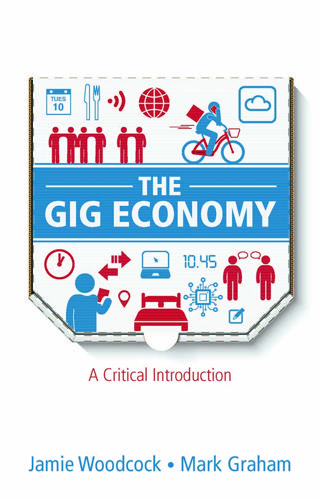
The Gig Economy: A Critical Introduction
by
Jamie Woodcock
and
Mark Graham
Published 17 Jan 2020
While the gendered basis of capitalism has not always involved such a straightforward distinction between women in the home and men at work, the creation of the household under capitalism has shaped domestic work in important ways. For example, as Mariarosa Dalla Costa and Selma James (1971: 10) have argued, ‘where women are concerned, their labor appears to be a personal service outside of capital.’ This can also entail the additional gendered burden of emotional labour at work (Hochschild, 1983), as well as the ‘second shift’ after work (Hochschild, 1989). For the housewife, this means the work is devalued, both in terms of remuneration and also with how it is valued as work. Dalla Costa and James (1971: 34) conclude that inside and outside of the home, women: have worked enough.
…
As both of us have found in our research, many workers in the gig economy are keen to stress that they appreciate the flexible aspects of the work, even if they then have other grievances. For example, a worker at Deliveroo explained that they preferred it as: you’re not selling anything, you’re not selling yourself so there’s no emotional labour in it and I think that’s why it’s been like a job that I’ve stuck at longer than other shit jobs because I find it a lot easier to not do that sort of selling yourself side of things. The alternative kinds of work that they described included service work based in a restaurant or working the phones in a call centre.
…
Similarly, Fred, a Deliveroo rider in London argued that it is ‘actually like a reasonable shit job because that illusion of freedom is really strong like you do kind of feel like your own boss because we can all stand around and talk shit about Deliveroo as much as we like’. Unlike other forms of low-paid service work, ‘there’s no reason to be extra nice to people like you’re not selling anything, you’re not selling yourself so there’s no emotional labour in it.’ On these platforms, the tip is mainly paid in the app before the delivery is actually made. While there are sometimes cash tips, these are rare. Compared to work in call centres, hospitality, and so on, this means not having to bring emotions to work and manage them throughout the shift, with all the stress that entails (Woodcock, 2017).
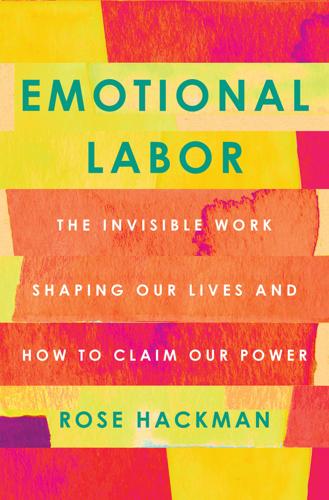
Emotional Labor: The Invisible Work Shaping Our Lives and How to Claim Our Power
by
Rose Hackman
Published 27 Mar 2023
In 2016, Canada-based public speaking coach Erin Rodgers captured the sentiment of giving emotional labor rightful worth and visibility in relationships when she tweeted, “I want the term ‘gold digger’ to include dudes who look for a woman who will do tons of emotional labour for them.” I loved the tweet, not just because it resonated with so many of the frustrated accounts people had entrusted me with—of coaching male partners through feelings, tempers, deciphering their sadnesses and joys. I loved the tweet because it clearly pointed to the emotional labor plundering that men often did in relationships with no accountability.
…
Tweaking and altering your authentic self to adhere to what is expected of you as a woman, either to please others or for fear of serious repercussion—in the form of social penalties like angry parents, economic penalties like job loss, or physical penalties like violence—is emotional labor. It is not only emotional labor; it is emotional labor with the threat of a slap on the wrist or more if you don’t do it. When performed in public, before an audience, emotional labor imposed on subjugated groups serves to infantilize and delegitimize those doing it. As an active expression of a submissive, nonconfrontational status, it also presents the power status quo as inevitable, paralyzing those doing emotional labor in place. Detecting how thoroughly and actively enforced these processes are helps lift the curtain on the ways in which persistent forms of inequality are maintained.
…
I cannot think of a better way of describing what emotional labor is, and how emotional labor was described to me time and time again by women. But if, once upon a time, in a very different world, emotional labor was currency itself, what happened for it to be buried so deep that it rarely garners a name, let alone value, visibility, or status? Is it possible that emotional labor is the expression of this system, persisting but pushed to the shadows as far more hierarchical systems of power have taken hold? * * * Connecting to the knowledge that emotional labor once wasn’t just valued and acknowledged but was value itself is invigorating to be sure, but it takes us only so far in the realm that we are in today.
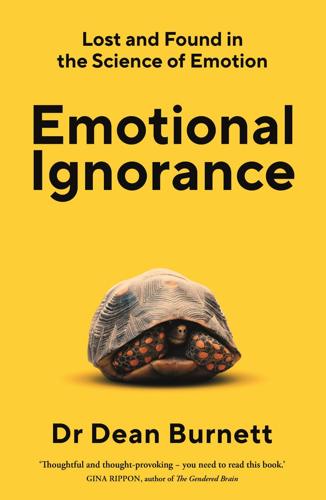
Emotional Ignorance: Lost and Found in the Science of Emotion
by
Dean Burnett
Published 10 Jan 2023
Be they situations where an argument has just happened, amidst an angry mob, or attending a heart-breaking funeral. No wonder our emotional experiences can so often be so weird and confusing: sometimes, they’re not actually our emotions at all. It makes you wonder: how do we get anything done? Emotional labour: emotions in the workplace Work gets a bad rap. We call it ‘the daily grind’, describe ourselves as ‘living for the weekend’, espouse the merits of a ‘work–life balance’, and so on. Why, though? There are many things in life that can result in very negative emotional reactions, but we rarely consider them to be negative by default, like how we so often do with the world of work.
…
I was over the moon to get a lead role in a juicy drama, but the woman on screen was really knackered, stressed, and unhappy most of the time outside of work, because on the 1–2 days off a week I had, I was so exhausted I could hardly get out of bed. I asked Carys about the unique form of emotional labour required in her profession, performing heart-rending or emotionally brutal scenes, where she had to convey a range of powerful negative emotions, on command, for prolonged periods. If you’re filming scenes in a hospital, you may not have access to it for very long. So, you’ve got to do all the heart-breaking hospital scenes in one or two days and edit them into the right order later.
…
That’s cats for you. Index Page numbers followed by (fn) indicate a footnote, e.g. 149(fn). Abbreviation: DB = Dean Burnett. absence of emotions: DB’s imagined scenario 1, 2, 3; negative consequences of 1; in science fiction 1, 2, 3, 4 acting work: actor/character relationship 1; emotional labour 1 action representation network (brain) 1 adolescence and early adulthood: brain development 1; crushes 1, 2; intense emotions 1; nightmare frequency 1, 2; safe exposure to negative emotions 1, 2; social media use 1 see also infancy and childhood affect: definition and components 1; versus basic emotions 1 airport security, facial recognition technology 1 altruism 1, 2 amygdala (brain region): and dreaming 1; and emotional regulation 1, 2; and emotions processing 1, 2, 3, 4, 5, 6, 7, 8, 9; gender differences 1; influence of testosterone 1; and memory formation 1; as part of olfactory system 1 AND model of nightmare production 1 anger: as ‘basic’ emotion 1, 2; and colour red 1, 2; DB’s anger during grief 1, 2, 3; facial expression of 1, 2; as ‘masculine’ 1(fn); and motivation 1, 2 see also negative emotions angular gyrus (brain region) 1, 2 anosmia (inability to smell) 1 anterior cingulate cortex (brain region) 1, 2, 3, 4 anterior olfactory nucleus (brain region) 1 anxiety: caused by work 1; performance anxiety 1; social anxiety 1, 2, 3; and status 1; vagus nerve stimulation treatment 1 see also negative emotions; stress apatheia (ultimate goal of Stoicism) 1 appraisal theory 1, 2 approach-attachment behaviour 1 approach versus avoid motivation 1, 2 arguments with romantic partner 1 arousal (component of affect) 1, 2, 3 asexuality 1 @AstroKatie (Katherine Mack) 1 attachment during early childhood 1, 2 see also parent emotional bond attention restoration, and colour green 1 auditory cortex (brain region) 1, 2(fn) auditory processing 1, 2, 3, 4, 5(fn) autism 1, 2 automated voices and announcements, annoyance caused by 1 avatar therapy 1 avoid versus approach motivation 1, 2 babies in the womb, playing music to 1, 2 baby-parent emotional bond 1, 2, 3 see also attachment during early childhood Bain, Alexander 1 Baron-Cohen, Simon 1 Barrett, Lisa Feldman 1, 2 basal ganglia (brain region) 1 basic emotions theory 1, 2, 3, 4 BDSM (sexual practice) 1, 2 belief perseverance 1 Bell, Charles 1, 2 bias: confirmation bias 1, 2, 3; fading affect bias 1, 2, 3; ingroup versus outgroup bias 1; negativity bias 1, 2 Blackmore, Chris 1, 2, 3 blinking, by cartoon characters 1 blood sugar, effect on emotions 1 blue colour, associations and effects 1, 2, 3 body, emotions experienced in see physiology-emotion connection body language: communicating emotion 1, 2, 3, 4; mimicry 1; missing from communication technologies 1 brain: body’s influence on 1; competing resource demands 1, 2, 3; development 1; distinguishing what is real/not real 1, 2; emotions as conscious or subconscious processes 1; gender differences (beliefs and experimental studies) 1; influence of oestrogen and testosterone 1; left brain/right brain facts and myths 1, 2, 3(fn), 4(fn); lobotomies 1; mirror neurons 1, 2, 3, 4; nervous and endocrine system regulation 1; neurotransmitters 1, 2, 3, 4, 5, 6; reward pathway and system 1, 2, 3, 4; somatic marker hypothesis 1; spindle cells 1; synapses 1, 2; triune model 1, 2 see also cognition (thinking); learning (of information); memory(ies) brain, functional regions: action representation 1; auditory processing 1, 2, 3, 4, 5(fn); cognition 1, 2, 3, 4; disgust 1; emotional regulation 1, 2; emotions (overview) 1, 2, 3; fear 1; imagination 1; intention processing 1; language processing 1; love 1, 2; lust 1, 2; memories 1, 2, 3, 4, 5; motivation 1, 2; olfactory processing 1, 2; visual processing 1, 2, 3 see also specific brain regions brain scans, limitations for studying emotions 1 brainstem 1, 2, 3, 4, 5 breastfeeding 1, 2 Broca’s area (brain) 1 Brown, Thomas 1, 2 Buddhism 1 bullying online 1 burnout 1, 2 Bushman, B.J. 1 bystander effect 1 cancer awareness, role of news and media 1 canned laughter, annoyance caused by 1, 2 categories and types of emotion: basic emotions (theory) 1, 2, 3, 4; identified by James McCosh 1 see also identifying and defining ‘emotions’ cats and other pets, emotional attachment to 1 caudate nucleus (brain region) 1 celebrity endorsements 1, 2, 3, 4 cerebellum (brain region) 1, 2, 3 childbirth, role of oxytocin 1 childhood see infancy and childhood chilli, enjoyment of pain caused by 1 cigarette smoke, DB’s memories and associations 1, 2 cognition-emotion relationship see emotion-cognition relationship cognition (thinking): brain regions associated with 1, 2, 3, 4; effect of love on 1; executive control 1, 2, 3; ‘flow’ state 1; and intrusive thoughts 1; and motivation 1, 2, 3, 4, 5; and social relationships 1, 2 see also learning (of information) cognitive dissonance 1 colours: cultural associations 1; in DB’s friend’s home 1, 2; emotional response to 1; and visual processing 1, 2, 3 communicating and sharing emotions: machine detection of emotions 1, 2; nonverbal information 1, 2, 3; online versus in-person 1, 2; at work 1, 2, 3, 4, 5 see also emotional contagion; empathy; facial expressions and emotions communication technologies see phone calls; social media and online communication; therapeutic applications of technologies; video calls confirmation bias 1, 2, 3 conformity 1, 2, 3, 4 consciousness, evolution of 1 consolidation of memories 1, 2, 3, 4 conspiracy theories 1, 2, 3, 4, 5 see also deception; misinformation and ‘fake news’ constructed emotions theory 1, 2 corpus callosum (brain region) 1 cortex/neocortex (brain region) (in general) 1 see also specific regions of the cortex cortisol 1 cross-race effect 1 crushes, in adolescence 1, 2 crying: DB’s (in)ability to cry 1, 2, 3, 4, 5, 6; gender differences 1; induced by TV and films 1; types and functions of tears 1 cuteness and cute aggression 1 cyberbullying 1 dancing 1 Darwin, Charles 1, 2 deception: automated voices and announcements 1; response to 1, 2; self-deception 1 see also manipulation of emotions; misinformation and ‘fake news’ defining ‘emotions’ 1, 2, 3, 4 deindividuation and ‘mob mentality’ 1 depression: caused by work 1, 2; gender differences 1; and gut microbiome 1; and memory 1; post-natal depression 1, 2; vagus nerve stimulation treatment 1 Diana, Princess of Wales, impact of death 1 digestive system, influence of 1, 2 disgust: as ‘basic’ emotion 1, 2; brain region associated with 1; and colour green 1; facial expression of 1, 2; and horror 1; and memory 1; and suppressed motivation 1 see also negative emotions doctors, emotional aspects of work 1 dopamine 1 drama therapy 1 dreams and nightmares: AND model 1; bizarre nature of 1, 2; DB’s bad dreams 1, 2, 3; due to COVID-19 pandemic 1, 2; and emotion processing 1; Freud’s interpretations 1; and memory consolidation 1; and mental health 1; post-traumatic 1; prevalence of nightmares 1; recurring 1; threat simulation theory 1 Dunbar’s number (of social relationships) 1 dysgranular field (brain region) 1 dysphoria 1 see also depression e-learning, motivation in 1 earworms 1 Ekman, Paul 1, 2, 3, 4 Eleri, Carys 1 embarrassment 1, 2, 3, 4, 5, 6, 7 see also negative emotions emojis and emoticons 1 emotion-cognition relationship: appraisal theory 1, 2; in attention and focus 1, 2, 3, 4; belief perseverance 1; cognitive dissonance 1; competition for brain’s resources 1, 2; confirmation bias 1, 2, 3; distinction recognised by Stoics 1; in effect of emotions experienced 1; in empathy 1; in ‘flow’ state 1; interrelatedness (in general) 1, 2, 3, 4; in learning and information processing 1, 2, 3; in love 1; motivated reasoning 1; in motivation 1, 2, 3; negativity bias 1, 2; role of imagination 1; shared evolutionary origin 1; in stage fright 1 emotion-memory relationship: appraisal theory 1, 2; emotions triggered by memories 1, 2, 3, 4; fading affect bias 1, 2, 3; happy memories being more detailed 1; for implicit memories 1; later emotions changing memories 1, 2, 3; longevity and potency of emotional memories 1, 2, 3, 4, 5, 6; in memory consolidation 1, 2; in PTSD 1, 2, 3, 4, 5; role of nightmares 1; suppressing emotional memories 1 emotional contagion: dangers of ‘mob mentality’ 1; versus empathy 1; evolutionary importance 1; from groups of people 1, 2, 3; from music 1, 2, 3; neurological mechanism for 1; from social media 1 emotional detachment/suppression at work 1, 2, 3, 4 emotional manipulation see manipulation of emotions emotional processing 1, 2 emotional regulation, brain regions responsible for 1, 2 emotional relationships: attachment during early childhood 1, 2; friendships 1, 2; one-sided see parasocial (one-sided) relationships; parent-baby emotional bond 1, 2, 3; role of neurotransmitters 1, 2; romantic see romantic relationships; see also social relationships emotions: causing change 1; as conscious/subconscious processes 1; historical study of 1; identifying and defining 1, 2, 3, 4; language of 1, 2 see also categories and types of emotion; communicating and sharing emotions; emotion relationship; emotion relationship; negative emotions; physiology connection; positive emotions; specific emotions empathy: and autism 1, 2; in babies 1; and body language mimicry 1; versus emotional contagion 1; evolutionary importance 1, 2, 3; influence of own emotions on 1; as ingrained 1, 2; ingroup versus outgroup bias 1; versus mentalising (theory of mind) 1; neurological mechanism for 1, 2, 3, 4; and physical pain 1; in romantic relationships 1; as selfish/unselfish 1 endocannabinoids 1 endocrine system 1 endorphins 1, 2 envy 1, 2 see also negative emotions episodic memories 1, 2, 3 evaluative conditioning 1 excitation transfer theory 1 executive control 1, 2, 3 see also cognition (thinking) existential dread, as a motivator 1 explicit memories 1 extrinsic versus intrinsic motivation 1 Facebook: DB’s use of 1, 2; research into emotional manipulation 1, 2, 3 see also social media and online communication faces, seeing in inanimate objects 1 facial colour changes 1 facial expressions and emotions: in artificial/CGI faces (uncanny valley) 1; automated emotion recognition 1; in cartoon characters (blinking) 1; cross-cultural similarities and differences 1, 2; difficulties distinguishing between emotions without context 1, 2, 3; early writings on 1; Ekman’s work 1, 2, 3, 4; ‘invisible’ emotions 1; involuntary nature of expressions 1, 2, 3, 4; online curation of emotions portrayed 1 facial paralysis, and empathy 1 facial recognition, cross-race effect 1 facial recognition technology 1 fading affect bias 1, 2, 3 ‘fake news’ see misinformation and ‘fake news’ fandom 1, 2 see also parasocial (one relationships fear: as ‘basic’ emotion 1, 2; brain region associated with 1; enjoyment of 1, 2; facial expression and colour 1, 2; as first emotion 1; of flying 1; and horror 1; and imagination 1; and motivation 1, 2, 3; in PTSD 1; smell of (in sweat) 1 see also negative emotions films and TV causing negative emotions 1, 2, 3, 4 Firth-Godbehere, Richard 1, 2, 3, 4, 5 flat Earth conspiracy theory 1, 2 ‘flow’ state 1 flying, fear of 1 football shirts, red colour’s competitive advantage 1 Freud, Sigmund 1, 2 friendships 1, 2 see also emotional relationships; social relationships frosty atmospheres, emotional contagion 1, 2 funerals: crying at 1; of DB’s father 1, 2, 3, 4, 5; emotional contagion at 1, 2; live streaming 1, 2 gender differences: adolescent crushes 1(fn); attitudes towards infidelity 1; in brains (beliefs and experimental studies) 1; in brains (DB’s impossible experiment) 1; in emotional regulation and expression 1, 2, 3, 4, 5, 6; ‘maternal instinct’ 1; mental health problems 1; other physiological differences 1; societal influences 1 gender discrimination 1, 2, 3 goal distraction 1 green colour, associations and effects 1, 2, 3 grief: DB’s acceptance of emotions 1; DB’s anger 1, 2, 3; DB’s attempts to disguise grief 1; DB’s emotional confusion 1, 2, 3; DB’s (in)ability to cry 1, 2, 3, 4, 5, 6; DB’s motivation and productivity 1, 2; DB’s need to talk after funeral 1; at death of Princess Diana 1; emotional processing 1, 2; shared grieving 1; stages of 1 see also negative emotions guilt 1 see also negative emotions habituation 1, 2 ‘hangry’ behaviour 1 happiness 1 hippocampus (brain region): and dreaming 1; and emotional regulation 1; and emotions processing 1, 2, 3; and imagination 1; and memory 1, 2, 3, 4, 5; and navigation 1 Holmes and Rahe stress scale 1, 2 Holmes, Sherlock (analogy for action representation) 1 hormones: cortisol 1; digestive 1, 2; effect of tears on 1; influence on the brain (and emotions) 1; oestrogen 1, 2; oxytocin 1, 2, 3, 4, 5, 6; testosterone 1, 2, 3; vasopressin 1, 2, 3 see also endocrine system horror (emotion) 1 horror movies 1, 2, 3 hypothalamus (brain region) 1, 2, 3 hysteria 1 Icke, David 1 identification, in parasocial relationships 1 identifying and defining ‘emotions’ 1, 2, 3, 4 imaginary friends 1 imagination and mental imagery 1, 2 imitation of observed actions 1 implicit memories 1 impression management 1, 2, 3, 4, 5 infancy and childhood: attachment with primary caregiver 1, 2; breastfeeding 1, 2; DB’s memories of 1, 2; emotional experiences 1; empathy in babies 1; imaginary friends 1; importance of sense of smell 1; learning from media characters 1; nightmare frequency 1, 2; oxytocin in newborns 1; parent-baby emotional bond 1, 2, 3 see also adolescence and early adulthood inferior frontal cortex (brain region) 1, 2 inferior parietal cortex (brain region) 1 infidelity, emotional versus sexual 1 insular cortex (insula) (brain region) 1, 2, 3, 4 intelligence, and brain anatomy 1 intention processing 1 intrinsic versus extrinsic motivation 1 intrusive thoughts 1 Izard, Carroll E. 1 jealousy 1 Kübler-Ross, Elizabeth 1 language of emotions 1, 2 language processing 1 learning (of information): from media characters 1; motivation 1, 2; from other people 1, 2; processing demands and information prioritisation 1, 2; from senses 1 LeDoux, Joseph 1 left brain/right brain facts and myths 1, 2, 3(fn), 4(fn) limbic system (brain region) 1, 2, 3, 4 lobotomies 1 Lomas, Tim 1 London taxi drivers, brain study 1 losing oneself in a book/film 1 love: brain regions associated with 1, 2; demands on the brain 1; effect on cognition 1; for family and friends 1, 2(fn); role of dopamine 1; romantic love 1, 2, 3 see also romantic relationships lust and sexual attraction: asexuality 1; brain regions associated with 1, 2; and romantic relationships 1, 2; Stoics’ rejection of 1, 2; suppression of 1 Mack, Katherine (@AstroKatie) 1 mammal brain (region) 1, 2, 3, 4 manipulation of emotions: by authorities 1; for marketing 1, 2, 3, 4, 5; response to 1; by social media 1; by traditional news and media 1, 2, 3, 4 marketing 1, 2, 3, 4, 5 McCosh, James 1 medical work, emotional aspects 1 memory(ies): brain regions associated with 1, 2, 3, 4, 5; changeable nature of 1, 2, 3, 4, 5, 6, 7; connections with objects 1, 2, 3, 4; consolidation 1, 2, 3, 4; DB’s memories of early childhood 1, 2; DB’s memories of his father 1, 2, 3, 4, 5, 6; episodic memories 1, 2, 3; explicit memories 1; fading affect bias 1, 2, 3; forgetting memories 1; and imagination 1; implicit memories 1; and music 1; procedural memories 1; reminiscence bump 1; retroactive memory enhancement 1; semantic memories 1; and sleep 1; and smell(s) 1, 2, 3, 4; suppression of 1; as synapses 1, 2; working memory 1; Zeigarnik effect 1 see also emotion relationship mental health/illness: and social media 1; and status 1; therapeutic applications of technologies 1 see also anxiety; depression; PTSD; schizophrenia mental imagery and imagination 1, 2 mentalising (theory of mind) 1, 2 mirror neurons 1, 2, 3, 4 mirroring body language 1 misinformation and ‘fake news’: about COVID-19 pandemic 1, 2; David Icke’s space lizards 1; flat Earth theory 1, 2; and social media/internet 1, 2, 3, 4; susceptibility to 1 see also deception ‘mob mentality’ (deindividuation) 1 Moebius syndrome (facial paralysis) 1 monkey experiments, mirror neurons 1 Morgan, Matt 1 motivated reasoning 1 motivation: approach-attachment behaviour 1; approach versus avoid motivation 1, 2; brain regions associated with 1, 2; and cognition 1, 2, 3, 4, 5; DB’s experiences during grief 1, 2; and emotions 1, 2, 3, 4, 5, 6; intrinsic versus extrinsic motivation 1; and novelty 1, 2, 3, 4 motivational salience 1 music: dancing 1; DB’s emotional response to 1, 2, 3, 4; differentiating between voice and instruments 1; earworms 1; emotional contagion from 1, 2, 3; emotional response to 1, 2; evolutionary significance 1, 2; and memory 1 musical expectancy 1, 2 navigation, role of hippocampus 1 negative emotions: and attention/focus 1, 2, 3, 4, 5; and creativity 1; emotion processing 1, 2; feeling good whilst experiencing 1, 2, 3; induced by TV and films 1, 2, 3, 4; and intrusive thoughts 1; and memory 1, 2, 3; as more impactful than positive emotions 1; negativity bias 1, 2; and novelty 1; and performance 1 see also specific emotions negativity bias 1, 2 nervous systems: enteric (‘second brain’) 1; parasympathetic 1, 2, 3; regulation by brain 1; somatic and autonomic 1; sympathetic 1, 2, 3 neurotransmitters 1, 2, 3, 4, 5, 6 news and media (traditional): credibility 1, 2, 3, 4; emotional content 1, 2, 3, 4; precursors to 1 see also conspiracy theories; misinformation and ‘fake news’; social media and online communication nightmares see dreams and nightmares noises, emotional response to 1, 2, 3 see also music novelty 1, 2, 3, 4, 5 objects, and memories 1, 2, 3, 4 oestrogen 1, 2 olfactory bulb and cortex (brain region) 1, 2, 3 olfactory system 1, 2, 3, 4 one-sided relationships see parasocial (one-sided) relationships online communication see social media and online communication online learning, motivation in 1 orbitofrontal cortex (brain region) 1, 2 oxytocin 1, 2, 3, 4, 5, 6 pain (physical): and empathy 1; enjoyment of 1, 2 paracingulate sulcus (brain region) 1 parasocial (one-sided) relationships: adolescent crushes 1, 2; benefits 1, 2; ending the relationship 1; with fictional characters 1, 2, 3, 4; identification with the object 1; with imaginary friends 1; losing oneself in a narrative 1; meeting the object 1; negative aspects 1; neurological mechanisms 1; with people you haven’t met 1, 2, 3, 4, 5 parasympathetic nervous system 1, 2, 3 Parch (TV drama), actor’s experiences 1 pareidolia 1 parent-baby emotional bond 1, 2, 3 see also attachment during early childhood ‘passions’ 1, 2, 3 pathos 1 performance anxiety (stage fright) 1 personality, influence of early experiences 1, 2 phone calls: DB’s last call to father 1; lack of nonverbal emotional cues 1; walking around during 1 physiology-emotion connection: body influencing emotion 1; emotion influencing the body 1; somatic marker hypothesis 1 see also crying Pickle (DB’s cat) 1 Pixar movies 1, 2(fn), 3 positive emotions: and attention/focus 1, 2; and memory 1, 2 see also specific emotions ‘Positive Lexicography’ project 1 post-natal depression 1, 2 posterior parietal cortex (brain region) 1, 2 prefrontal cortex (brain region): cognitive functions 1, 2, 3; and emotional regulation 1, 2; and emotions processing 1, 2; and imagination 1; influence of testosterone 1; and memory 1; and mentalising (theory of mind) 1; and motivation 1, 2 pride 1 procedural memories 1 processing (negative) emotions 1, 2 Proust, Marcel, In Search of Lost Time 1 psycho-emotional tears 1, 2 PTSD (post-traumatic stress disorder) 1, 2, 3, 4, 5 racism: cross-race effect 1; and oxytocin 1 rage see anger red colour, associations and effects 1, 2, 3 relationships see emotional relationships religious perspectives on emotions 1 reminiscence bump 1 reptile brain (region) 1 ‘resting bitch face’ 1 retroactive memory enhancement 1 reward, and motivation 1 reward pathways of brain 1, 2, 3, 4 Ridley, Rosalind 1 Rippon, Gina 1, 2, 3 romantic relationships: adolescent crushes as preparation for 1; attitudes towards infidelity 1; disagreements and disputes 1; emotional connection between partners 1, 2; empathy versus problem ‘fixing’ in 1; long-term relationships 1, 2; love in 1, 2, 3; negative emotions in 1; online versus in-person 1; and own identity 1, 2; physical attraction in 1, 2; role of oxytocin 1; stress associated with losing partner 1, 2; trumpeting on social media 1 see also emotional relationships sadness: as ‘basic’ emotion 1; and colour blue 1, 2; enjoyment of 1, 2, 3; facial expression of 1 schadenfreude 1, 2 schizophrenia 1 scientific method 1, 2 scientists: motivations 1, 2, 3; popular portrayal as lacking emotion 1 self-deception 1 semantic memories 1 Sesame Street (TV) show, learning from 1 sex differences see gender differences sexism see gender discrimination sexual activity, BDSM 1, 2 sexual attraction see lust and sexual attraction sharing emotions see communicating and sharing emotions Simpsons, The (TV show), blinking in 1(fn) Singer, Tania 1 sleep 1, 2, 3 see also dreams and nightmares smell(s): anosmia (inability to smell) 1; DB’s memories of cigarette smoke 1, 2; and emotions 1, 2; evolutionary importance 1, 2, 3; and memory 1, 2, 3, 4; olfactory system 1, 2, 3, 4 social anxiety 1, 2, 3 social media and online communication: adolescents 1; adults/older people 1; emojis and emoticons 1; and emotional contagion 1; impression management 1, 2, 3, 4, 5; lack of nonverbal emotional cues 1, 2; live streaming funerals 1, 2; machine detection of emotions 1; negative aspects 1, 2, 3, 4, 5; online versus in-person emotions and personae 1; positive aspects 1, 2; versus real-world interactions, cognitive demands 1; and reward 1, 2, 3; and self-deception 1; and self-validation 1, 2, 3; and status 1, 2 see also conspiracy theories; Facebook; misinformation and ‘fake news’; news and media (traditional); video calls social relationships: cognitive load associated with 1, 2; Dunbar’s number 1; friendships 1, 2; one-sided see parasocial (one-sided) relationships; see also emotional relationships somatic marker hypothesis 1 spicy food, enjoyment of pain caused by 1 spindle cells 1 Spiner, Brent 1 sports kit, competitive advantage of wearing red 1 SPOT (Screening of Passengers by Observation Techniques) programme 1 stage fright 1 stalkers 1 Star Trek: The Next Generation (TV series): Data actor’s experience of fans 1; Data’s inability to choose ice-cream flavour 1 Star Trek (TV series): Stoicism of Vulcans 1, 2; universal use of English language 1 Starbucks (branding) 1 status: and emotions 1; and social media 1, 2; subjective status and mental health 1 Stoics and Stoicism 1, 2 stress: benefits of green environments for 1; caused by uncertainty 1; caused by work 1, 2; coping mechanisms 1; cortisol 1; Holmes and Rahe stress scale 1, 2; PTSD 1, 2, 3, 4, 5; and status 1; Yerkes-Dodson curve 1 see also anxiety; negative emotions striatum (brain region) 1 study of emotions (historical) 1 suicide 1, 2 superior temporal cortex (brain region) 1, 2, 3, 4 suppression of emotions: during disagreements with romantic partner 1; in learning and decision making (as impossible) 1; at work 1, 2, 3, 4 supramarginal gyrus (brain region) 1 surprise 1, 2 sympathetic nervous system 1, 2, 3 synapses (neuron connections) 1, 2 taxi drivers, brain study 1 tears, types and functions of 1 teenage years see adolescence and early adulthood temporal lobe (brain region) 1, 2 testosterone 1, 2, 3 thalamus (brain region) 1, 2, 3 theories of emotions see basic emotions theory; constructed emotions theory theory of mind (mentalising) 1, 2 thinking see cognition (thinking) threat simulation theory 1 transportation phenomenon 1 triune brain model 1, 2 TV and films causing negative emotions 1, 2, 3, 4 types of emotion see categories and types of emotion uncanny valley 1 uncertainty, unpleasant nature of 1 vagus nerve 1 valence (component of affect) 1, 2 vasopressin 1, 2, 3 video calls: DB’s call with friends after father’s funeral 1; lack of nonverbal emotional cues 1 virtual reality (VR) 1 visual cortex (brain region) 1, 2 visual processing 1, 2, 3, 4, 5, 6 see also colours voice characteristics, and communicating emotion 1 volcano/cupcake scenario (competing motivations) 1 wine tasting and appreciation 1 work and workplaces: communicating the wrong emotions at work 1; DB’s job embalming cadavers 1, 2, 3(fn); emotional aspects of medical work 1; emotional detachment/suppression 1, 2, 3, 4; emotional labour of acting work 1; mental health problems caused by 1, 2, 3, 4, 5, 6; performance appraisals 1, 2; wellbeing initiatives 1, 2 working memory 1 yawning, as contagious 1 Yerkes-Dodson curve 1 Zeigarnik effect (tendency to forget completed tasks) 1 ‘zone,’ state of being in 1 Zoom calls see video calls About the Author Dean Burnett is a neuroscientist, blogger, sometimes-comedian and author.
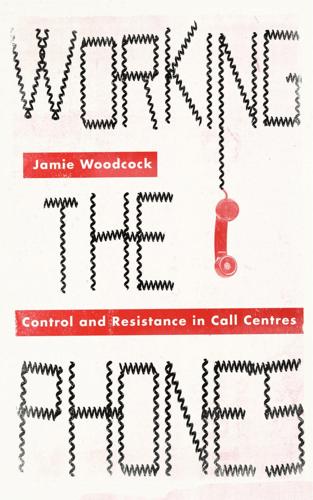
Working the Phones: Control and Resistance in Call Centres
by
Jamie Woodcock
Published 20 Nov 2016
As a form of employment it is gendered and considered unskilled, with poor conditions and low pay, while lacking formal union organisation.16 This helps to explain the widespread rejection of work in call centres, something well understood by managers when trying to motivate workers before each shift. There is also the pressure of having to perform emotional labour to meet targets, while additionally being expected to genuinely enjoy the experience. The issue of performance is difficult for management as it is not clear how to identify the elusive qualities that make a successful sales call. At one point in The Call Centre a young Welsh woman explains that she has ‘to put a phone voice on the way I speak’, and dropping her Welsh accent she enunciates in a blander tone: ‘Phone, Don’t, Calling . . . so I change my voice completely when I go on the phones.’
…
The application of technology to the labour process and intensive performance-monitoring techniques paint a general picture of post-industrial work that ‘become not Daniel Bell’s dream, but Harry Braverman’s nightmare’.121 The figure of the call-centre worker is often presented as isolated, lacking agency and faced with precarious conditions. As Enda Brophy has 32 Introduction succinctly summarised, ‘working in a call centre tends to include a well-established mix of low wages, high stress, precarious employment, rigid management, draining emotional labour and pervasive electronic surveillance’.122 If the call centre is conceived of as a site of struggle, the lack of workplace organisation or trade unionism has left the ‘frontier of control’ firmly in the hands of management.123 However, wherever power is exercised there is the potential for resistance.
…
However, ‘abandonment’ of surveillance is not possible, as these methods are ‘integral to the operation of the call centre’.13 These two related contradictions have a strong effect on the experience of call-centre workers, creating what Taylor and Bain describe as ‘a situation in which the operator has “an assembly-line in the head”, always feeling pressure and constantly aware that the completion of one task is immediately followed by another’.14 The stress, often the result of this pressure to ensure that quantitative objectives are reached, reduces the ability of workers to achieve the qualitative objectives, which include what Taylor and Bain describe as the demand to ‘smile down the phone’.15 This recalls the demand for flight attendants to maintain a perpetual smile, discussed by Arlie Hochschild in her account of emotional labour. She defined this kind of labour as ‘requiring one to induce or suppress feeling in order to sustain the outward countenance that produces the proper state of mind in others’.16 The method by which this can be achieved over the phone rather than in person is different. Taylor and Bain argue that the ‘appropriate telephone manners and behaviours’ alongside the previously mentioned need to ‘smile down the phone’ can be included within Hochschild’s definition of ‘outward countenance’.17 The demand to ‘smile down the phone’ can be further illustrated by returning to The Call Centre documentary, discussed in Chapter 1.18 When manager Nev explains that ‘happy people sell, miserable bastards don’t’, his main interest (it is safe to assume) is not the happiness of the workforce as an end in itself.

Class Acts: Service and Inequality in Luxury Hotels
by
Rachel Sherman
Published 18 Dec 2006
Self at Work In regard to these characteristics—the importance of intangible workerclient interactions and the client’s participation in the production of services—the literature on service work has tended to concentrate less on structure and class than on selfhood, interaction, and gender. First, scholars debate the effects that the performance of emotional labor has on workers who operate in what C. Wright Mills called “the personality market.”34 Hochschild drew on the Marxist notion of alienation to suggest that emotional laborers can be estranged from their emotions; subsequent work has looked at the pros and cons of emotional labor for workers in different settings.35 At a theoretical level, some analysts have discussed the broader social and cultural effects of commodifying and routinizing emotional labor, especially the possible loss of authenticity in human interaction generally.36 Despite research showing that emotional labor is not alienating for workers in all work situations, an implicit opposition between an “authentic,” agentic self and an estranged, alienated, and performative one often marks this literature, with authentic UC_Sherman (O).qxd 10/3/2006 2:01 PM Page 9 introduction 9 selfhood, for the most part, seen as located outside work settings.37 For example, researchers often talk of a self that needs to be “protected” at work or suggest that workers preserve their agentic selves through resistance.38 Many scholars have also looked at how service work occupations and interactions are gendered.39 A second focus of this research has been on how the self is managed in interactive work.
…
When the woman turned off her phone and looked around for it, Lupe said pleasantly, “It’s over there,” rather than pick it up and hand it to her. The guest took the key and left; Lupe commented, “She was so rude, I’m not going to be all like, [in a deferential tone] ‘Here’s your key, ma’am.’” Here Lupe withheld her emotional labor and deference as a way of punishing the woman for not paying attention to her but without being overtly disrespectful. Another way workers withheld emotional labor was to become more performative, as other authors have noted.20 Hans, an assistant manager UC_Sherman (O).qxd 200 10/3/2006 2:01 PM Page 200 chapter five at the Royal Court, told me his strategy was to “kill them with kindness.”
…
At the Royal Court these workers were all men, so they were called housemen, while at the Luxury Garden there were female runners. I use the term runners throughout. 54. Housekeepers also do emotional labor in that they have to suppress certain aspects of themselves to remain unobtrusive, as Dan Wilk points out (personal communication). However, given their extremely limited contact with guests, emotional labor is not as significant a part of the service they produce as it is for interactive workers. 55. See Adler and Adler (2004) for similar findings in Hawaiian resorts. 56. U.S.-born men in nonmanagerial positions that do not involve physical labor (i.e., front desk agents and concierges) are frequently openly gay.
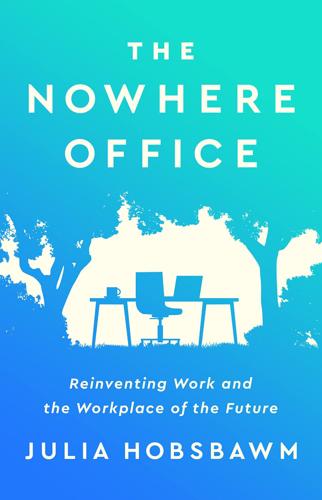
The Nowhere Office: Reinventing Work and the Workplace of the Future
by
Julia Hobsbawm
Published 11 Apr 2022
Evidence from a Chinese Experiment’, National Bureau of Economic Research, March 2013, https://www.nber.org/papers/w18871 33. Hochschild, Arlie Russell, The Time Bind: When Work Becomes Home and Home Becomes Work (Holt Paperbacks, 2001 [1997]); see also this interview with Hochschild: Julie Beck, ‘The Concept Creep of “Emotional Labour”’, Atlantic, 26 November 2018, https://www.theatlantic.com/family/archive/2018/11/arlie-hochschild-housework-isnt-emotional-labor/576637/ 34. Alice Hancock and Philip Georgiadis, ‘We Don’t Know How Many People Will Choose to Fly’, Financial Times, 14 January 2021, https://www.ft.com/content/867a5342-c94c-43f6-9783-a817443c9471; and Natasha Frost, ‘Will Business Travel Ever be the Same?’
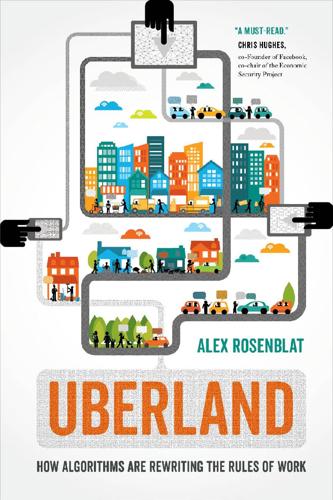
Uberland: How Algorithms Are Rewriting the Rules of Work
by
Alex Rosenblat
Published 22 Oct 2018
Rosenblat and Stark, “Algorithmic Labor,” 3775–3776. 21. Gina Neff, Venture Labor: Work and the Burden of Risk in Innovative Industries (Cambridge, MA: MIT Press., 2012), 28; Rosenblat and Stark, “Algorithmic Labor,” 3772. 22. Robin Leidner, “Emotional Labor in Service Work,” Annals of the American Academy of Political and Social Science 561, no. 1 (1999): 83; Rosenblat and Stark, “Algorithmic Labor,” 3772. 23. This emotional-labor role is captured by the phrase emotional hit man, which describes the affective harm workers experience from certain oppressive workplace practices: Winifred Poster, “Hidden Side of the Credit Economy: Emotions, Outsourcing, and Indian Call Centers,” International Journal of Comparative Sociology 54, no. 3 (2013): 225, https://nebula.wsimg.com/b0550d72bc3b5a3787bee80b630b9266?
…
See also Mareike Glöss, Moira McGregor, and Barry Brown, “Designing for Labour: Uber and the On-Demand Mobile Workforce,” Proceedings of the 2016 CHI Conference on Human Factors in Computing Systems (New York: ACM, 2016): 1632–1643, http://doi.acm.org/10.1145/2858036.2858476. 25. Noopur Raval and Paul Dourish, “Standing Out from the Crowd: Emotional Labour, Body Labour, and Temporal Labour in Ridesharing,” Proceedings of the 19th ACM Conference on Computer-Supported Cooperative Work and Social Computing (New York: ACM): 97–107, http://doi.acm.org/10.1145/2818048.2820026. 26. Arlie Russell Hochschild, The Managed Heart: Commercialization of Human Feeling, Twentieth Anniversary Edition, with a New Afterword, 2nd ed.
…
Because passengers do not rate Uber separately from their driver, drivers are forced to assume responsibility for the entire Uber experience.22 Drivers who work for multiple ridehail companies occasionally describe Uber passengers as “more picky”; fearing low ratings and deactivation, these drivers try to be extra nice to dissatisfied passengers when working for Uber.23 Drivers thus take on the “care work” involved in managing Uber’s relationship with passengers,24 and they provide emotional labor, like making passengers feel good, as part of their service-economy job.25 These little gestures, at least in the earlier stages of Uber’s operations in a given market, might include providing care items like bottles of water or candy to passengers—gestures traditionally reminiscent of female service work (think of airline attendants, hostesses, and waitresses who smile at you).26 After drivers have made an extra effort, the fact that some passengers don’t bother to rate their trips also strikes some drivers as unfair.
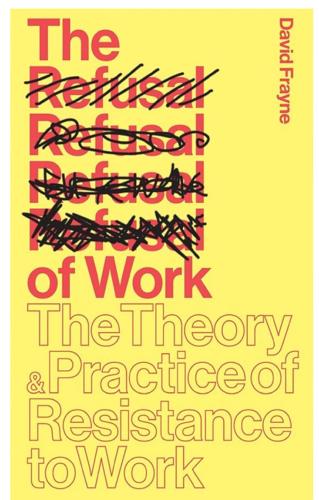
The Refusal of Work: The Theory and Practice of Resistance to Work
by
David Frayne
Published 15 Nov 2015
The problem here is not that the labour process presents no opportunities for expression and identification, but that the employer expects workers to become fully involved and invested in the job. The insights developed around this new form of alienation are indebted to C. Wright Mills’ classic study White Collar (Mills, 1956), though discussions in this area were subsequently popularised by Arlie Hochschild and her theory of ‘emotional labour’ (Hochschild, 1983). Both authors essentially posed the same question: what are the consequences when instead of being asked to leave their human qualities at home in the morning, workers are expressly asked to bring their emotions, their personalities and their individuality to work? In her book The Managed Heart (1983), Hochschild suggested that in order to function as integrated members of society, people are regularly required to manage their emotions.
…
In the social world, we are constantly required to work upon our feelings in order to express the socially appropriate emotion or, as Hochschild put it, to satisfy the culturally negotiated ‘feeling rules’ of a given situation. Hochschild’s theory is relevant to modern-day work experiences in so far as the ability to perform emotion work has increasingly come to represent a source of commercial value. The most obvious examples of emotional labour are found in the service industry, where the management of emotions is a core element of the job. Service workers are constantly required to ‘induce or suppress feeling in order to sustain the outward countenance that produces the proper state of mind in others’ (Hochschild, 1983: 7). Hochschild developed these ideas by studying the work of flight attendants in the early 1980s.
…
We can consider the comparable situation of many of today’s high-street retail workers, many of whom will receive training in the simulation of friendliness, or be provided with step-by-step scripts and on-screen prompts that guide them through customer interactions.1 Adherence to the feeling rules is often enforced via an elaborate disciplinary apparatus, with surveillance cameras, ‘mystery customers’, customer complaints procedures and employee appraisals all functioning to maintain the predictability of employee behaviour. Hochschild’s main concerns surrounded the potentially stressful or psychologically numbing effects of emotional labour. The daily demand to separate external social performances from internal feelings was seen as a source of mental strain. Attempts to micro-manage workers’ interactional conduct might also be experienced as a kind of personal violation, because emotion work ‘draws on a source of self that we honour as deep and integral to our individuality’ (Hochschild, 1983: 7).

All Day Long: A Portrait of Britain at Work
by
Joanna Biggs
Published 8 Apr 2015
I’m good at uniforms, you know, playing a role.’ It may have become central to our economy, but the invisible demands of service work, and how to defend ourselves against the effects of those demands, are rarely talked about. You can legislate for a safer working environment and a shorter working day, but how do workers organise against emotional labour? Esther considers herself lost to society at the end of Mary Barton: ‘She had longed to open her wretched, wretched heart,’ Gaskell says when Esther meets her niece Mary again at the end of the novel, ‘so hopeless, so abandoned by all living things, to one who had loved her once; and yet she refrained, from dread of the averted eye, the altered voice, the internal loathing, which she feared such disclosure might create’.
…
‘You have customers who don’t want to listen but you’ve got managers breathing down your neck, saying you’ve got to let them speak to you like crap basically.’ A noticeboard at the entrance divides ordinary phrases into two columns: ‘I’m not sure’, ‘usually’, ‘obviously’ and ‘maybe’ are ‘below the line’ and ought to be avoided. ‘Above the line’ terms include: ‘lovely’, ‘excellent’ and ‘what can I do?’ The emotional labour of a call centre isn’t just learning to withstand a customer’s impatience but also learning to speak in a voice other than your own. At lunch he’ll smoke or he’ll call his wife, his kids or his grandparents: there’s ‘someone to ring every day’. Everyone who works there gets free broadband and there are landlines provided in the atrium, under nursery-bright murals of slogans like ‘Let’s Pull Together – We’re One Big Team’ and ‘We Don’t Shift the Blame’ and ‘Do Something Brilliant’.
…
Instead of agitating for more waged labour, to put another crack in the glass ceiling and occupy another board seat, women would redefine what work is: Why is writing an email work and feeding a baby not work? Friedan and Wages for Housework came up with two different solutions to the problem, but they agreed on its nature. It wasn’t the cooking and cleaning; it was the ‘smiling and fucking’ – the emotional labour service work also calls for – as well as the pretence that it was offered happily that made the work unbearable. ‘Just how natural it is to be a housewife,’ Federici wrote in her 1974 pamphlet, ‘is shown by the fact that it takes at least twenty years of socialisation – day-to-day training, performed by an unwaged mother – to prepare a woman for this role.’
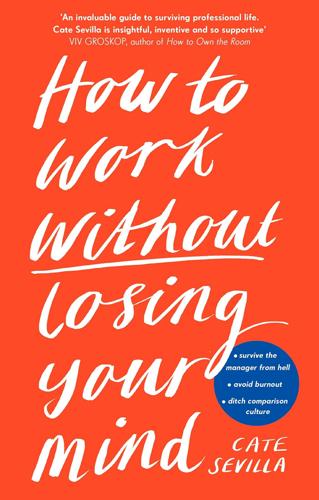
How to Work Without Losing Your Mind
by
Cate Sevilla
Published 14 Jan 2021
She explained that this was a symptom of burning out, and that she had personally burnt out because she had ‘internalized the idea that I should be working all of the time’ – something, she says, that happened because everything and everyone in her life had explicitly and implicitly reinforced the idea since she was young. She pointed out that women, and especially those who have children, have a ‘second shift’ to do after their day job has finished, consisting of both domestic and emotional labour. She said that the millennial condition was forged in a culture that is always ‘on’, always working, always hustling, and that the extent of what we do, how hard we work, is often ignored or belittled. The mental loads we carry are enormous, and heavy. And, often, we pay the price with our ambition.
…
Discrimination and prejudice against pregnant women and people who have children in the workplace very much still exists. Women in heterosexual couples are disproportionately responsible for time-demanding parenting duties such as school runs and nursery drop-offs and pick-ups, and other forms of emotional labour. There’s a lack of role models who are working mothers in senior leadership roles. Childcare is EXPENSIVE. Flexible working is wonderful, but not always available or possible for some parents. IT’S REALLY BLOODY HARD! Quite frankly, the way that the current working culture, maternity leave, nurseries and childcare systems are set up is wildly unfair.
…
A mother’s mental load What strikes me about the motherhood penalty, and the general attitude towards mothers at work, is that our working culture is directly affected by traditional gender stereotypes. Because women are still undertaking that ‘second shift’,11 and doing the majority of unpaid domestic work and emotional labour at home, it means that their work is more greatly impacted than their male counterparts. In heterosexual relationships, as evolved as we’d like to think we’ve become with phrases like co-parenting and fathers no longer referring to looking after their own children as ‘babysitting’12 – when it comes to childcare, cooking and general housework, a recent study found that women in the UK are responsible for 60 per cent more unpaid work than men.13 Sixty per cent!

The Precariat: The New Dangerous Class
by
Guy Standing
Published 27 Feb 2011
Tertiary skill In societies where most economic activity consists of the manipulation of ideas, symbols and services done for people, mechanical processes and tasks shrink into secondary significance. This puts technical notions of ‘skill’ in disarray. In a tertiary society, skill is as much about ‘body language’ and ‘emotional labour’ as about formal skills learned through years of schooling, formal qualifications or apprenticeship schemes. Typically, the precariat has a lower expected return to investment in any specific sphere of training, while the cost of acquiring it is a higher share of actual or potential income or savings.
…
The skill arises in selfdiscipline, the ability to limit diligence to sustainable involvement. Focusing on the screen for hours on end is a recipe for attention deficit, an inability to concentrate and wrestle with complex problems and tasks. Another range of skills in a tertiary society are personal deportment skills, covered by what some sociologists call ‘emotional labour’. The ability to look good, produce a winning smile, a well-timed witticism, a cheery ‘good day’ greeting, all become skills in a system of personal services. There may be a correlation between them, schooling and income, in that those from affluent families tend to develop more refined personable skills and also obtain more schooling.

Ten Steps to Nanette: A Memoir Situation
by
Hannah Gadsby
Published 15 Mar 2022
Weaving was the perfect process to draw Nanette out of my mind, given that the show was in part a tribute to all the women in my life who’ve helped hold me together. My mum, Nan, Grandma and Sister along with my fierce friends Cheryl, Suz, Caz and Annie and all their knitting, quilting, stitching, solving, caring and healing. Woven throughout Nanette is my best effort at my own atypical appreciation for all the emotional labour so many people have invested in me, but that which I am often too slow to process until much, much later. With my freshly baked layer cake weaving its way into existence, I finally had to accept that the form of comedy, as I understood it, was never going to be sophisticated enough to carry the complexity of what I was attempting to do.
…
We all did; and sadly, Mum knew this and that must have been painful. Dad’s preference for fence-sitting has been a near-constant source of frustration for Mum. As a child I couldn’t at all comprehend why, but now, as an adult, I can see the immense pressure she must have been under. Essentially, when it came to emotional labor and decision-making, Mum was operating as a single mother of six (five children and one adult man). But whenever things went wrong, which they frequently did, Mum would suddenly be married again and having the anatomy of her mistakes explained back to her by the very man who’d refused to help in the first place.

How Emotions Are Made: The New Science of the Mind and Brain
by
Lisa Feldman Barrett
Published 6 Mar 2017
“Out of Sight but Not Out of Mind: Unseen Affective Faces Influence Evaluations and Social Impressions.” Emotion 12 (6): 1210–1221. Anderson, Michael L. 2014. After Phrenology: Neural Reuse and the Interactive Brain. Cambridge, Mass.: MIT Press. Anleu, Sharyn Roach, and Kathy Mack. 2005. “Magistrates’ Everyday Work and Emotional Labour.” Journal of Law and Society 32 (4): 590–614. Ansell, Emily B., Kenneth Rando, Keri Tuit, Joseph Guarnaccia, and Rajita Sinha. 2012. “Cumulative Adversity and Smaller Gray Matter Volume in Medial Prefrontal, Anterior Cingulate, and Insula Regions.” Biological Psychiatry 72 (1): 57–64. Antoni, Michael H., Susan K.
…
And sometimes a judge must shoulder the affect of an entire country. Former U.S. Supreme Court Justice David Souter suffered so much while deciding Bush v. Gore that he wept because of its deliberations (along with half of the United States). All this mental effort taxes a judge’s body budget. The judge’s life is one of intense and continual emotional labor under the fiction of equanimity.56 Nevertheless, the law continues to hold dear the fiction of the dispassionate judge, even at the highest levels. When Supreme Court Justice Elena Kagan, as a nominee in 2010, was asked whether it was ever appropriate for feelings to help decide a case, she replied to the contrary, “It’s the law all the way down.”
…
[back] 55. is more likely to lose: Black et al. 2011. affective connotations in the judges’ words: Ironically, the late Justice Antonin Scalia was known for his emotional style of discourse; see heam.info/scalia-1. [back] 56. half of the United States: Wikipedia, s.v. “David Souter,” last modified March 30, 2016, http://en.wikipedia.org/wiki/David_Souter. under the fiction of equanimity: The sociologist Arlie Hochschild calls it “emotional labor” (Hochschild 1983). [back] 57. sentencing portion of criminal cases: In 1972, the Supreme Court decreed that “any decision to impose the death sentence be, and appear to be, based on reason rather than caprice or emotion” ( Furman v. Georgia, 408 U.S. 238, 311 [1972], [Stewart, J., concurring], as cited in Pillsbury 1989, 655n2).

The Class Ceiling: Why It Pays to Be Privileged
by
Sam Friedman
and
Daniel Laurison
Published 28 Jan 2019
But, significantly, others do not enforce this limit. Instead, it is the result of Bill’s own reluctance to embrace full-blown identity mutation.12 There is also an additional point to consider about Bill’s story. Not only does it underline the limits of assimilation, but it also illustrates the exhausting emotional labour involved in maintaining this “blag”, as Bill describes it. This emotional imprint is important to understand in its own right, as we go on to explore now. 178 Self-elimination The price of the ticket Many tend to presume that upward social mobility is a positive experience. The upwardly mobile are routinely presented as the ‘winners’ of meritocracy, romanticised figures who have made it ‘against the odds’.
…
So you are a very isolated kind of figure. 181 The Class Ceiling The people that really love you and care about you are delighted for you that you got away but they don’t understand you. So there is a kind of isolation in that respect, you are in this strange zone where it is difficult to find identification or, you know, solace or safety. You are pretty much on your own. Again what emerges most clearly here is the emotional labour required to reconcile these contradictory sources of identity – to “find solace”, as Douglas notes. This represented a sort of emotional juggling act where, facing upwards, these individuals often expressed feelings of insecurity or self-doubt, but then when they faced down towards their origins they were often hit with feelings of guilt and estrangement.18 In fact, many noted that our interview had constituted a somewhat cathartic experience, bringing to the fore thoughts and emotions normally left unexplored or deliberately repressed.
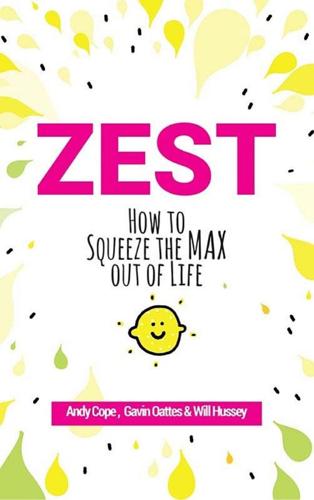
Zest: How to Squeeze the Max Out of Life
by
Andy Cope
,
Gavin Oattes
and
Will Hussey
Published 19 Jul 2019
Teachers, nurses, cleaners, therapists, physiotherapists, radiologists, doctors, teaching assistants, doctors’ receptionists, road sweepers, charity workers, dinner ladies, dinner men, bin men, bin ladies, paramedics, navy/army/airforce, traffic wardens, post office workers, police, surgeons, people who shine the floors in schools using those whirly polishing things, librarians, carers; thank you. Thank you for caring. There’s something called ‘compassion fatigue’. Teachers, for example, have a remit to educate youngsters. The likelihood is that you will be paid commensurate with your skills and qualifications but the emotional labour of the job doesn’t feature in the job description. It’s emotionally draining because you care. Thank you for caring. Your bin collection team will be paid a bin collection wage that takes no account of the fact that there’s a whole shebang of emotional detritus that comes with the bin bag detritus.

Stolen: How to Save the World From Financialisation
by
Grace Blakeley
Published 9 Sep 2019
Others found work in poorly-paid, insecure jobs in the emerging service sector, in hospitality or retail. Even the most dedicated unionists found it hard to organise in these sectors, with workers spread across the country, paid partly in tips or commissions, and forced to undertake the kind of psychologically-warping emotional labour that can erode one’s capacity for genuine connection with other human beings. Those who had been granted an education might have been allowed access into the ranks of the civil service, joining the salaried professionals themselves. Most found themselves in debt of one kind or another. This was perhaps the most tortuous aspect of the new poverty: the power asymmetry between a debtor and a creditor is far more extreme than that between a worker and a boss.
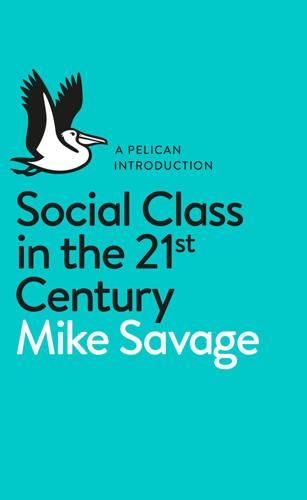
Social Class in the 21st Century
by
Mike Savage
Published 5 Nov 2015
Such a sentiment of being torn between two worlds was common in some manner in many of our interviewees, especially among those who had experienced especially long-range trajectories or had recollections of very sudden moments of mobility, particularly during their childhood. Here there was often a shared sense of feeling somehow ‘culturally homeless’,16 and each had their own stories of the exhausting emotional labour required to reconcile such contradictory sources of identity. These were especially marked among immigrant groups, who often narrated complex stories of feeling that they did not belong to British society, even if they had been upwardly mobile into its higher reaches.17 The interplay between ethnicity, immigration and class caused intense tensions here.

Discovering the Inner Mother: A Guide to Healing the Mother Wound and Claiming Your Personal Power
by
Bethany Webster
Published 5 Jan 2021
And we are protecting people from their own painful truths—the very truths that will free them. It’s time to dismantle the false ethics of patriarchy that keep women stuck in the role of emotional laborers. For women, patriarchy conflates emotional labor with a false sense of ethics. It’s this false ethics that causes us to perpetuate our own internalized oppression. We are taught in various ways that emotional labor is an innate skill of women, and if we don’t do it, the implication is that we’re not a “good person” or a “desirable woman.” This leads us to feeling suspicious of ourselves if we feel fed up with it.
…
All of the following very common platitudes give the illusion of elevating the mother and disparaging the child for having a normal range of feelings: “Don’t blame your mother.” “Your mother gave you life.” “How dare you question your mother.” “Your mother is trying her best.” “You only have one mother.” Stereotype of Women as the “Emotional Laborers” Patriarchy not only makes emotions seem frivolous, weak, and shameful, it projects the entire emotional domain onto women. Individuation requires that the daughter withdraw from any overfunctioning (emotional labor) for the mother, whether as her scapegoat, her emotional confidante, her problem-solver, her pet, her target for rage, or her distraction. It also requires that the daughter stop waiting for the mother to do things that she may simply lack the capacity to do, such as celebrating the daughter, accurately seeing her, acknowledging their differences with love, etc.
…
Traditionally, women’s work has not only been the cooking, cleaning, and caring for children, but also involved bearing the emotional labor of relationships: cleaning up emotional messes, starting the uncomfortable conversations, feeling the burden of silences, living with things unsaid, burying unspoken needs, being the projection screen of disowned pain, wading silently through passive-aggressive slights, etc. The problem is that men have traditionally been taught to devalue emotional labor and see it as purely women’s work, when in reality, both partners should shoulder equal responsibility for emotional intelligence and communication skills.
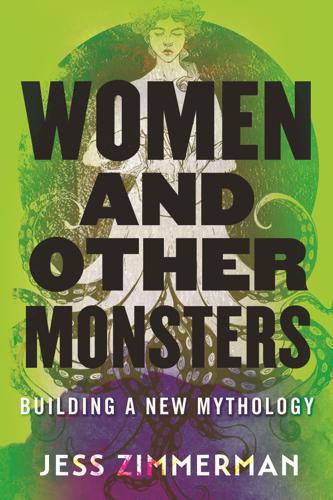
Women and Other Monsters: Building a New Mythology
by
Jess Zimmerman
Published 9 Mar 2021
A few years after I left my marriage, in the summer of 2015, I wrote an article for the now-shuttered website The Toast about women’s uncompensated emotional labor. It was published—no lie—on the same day my now-husband and I were visiting the House on the Rock. The idea of emotional labor being designated “women’s work” was by no means a new one, nor was the concept of emotional labor generally. In fact, technically I was using the term wrong; academically, emotional labor meant the feelings-related work people were expected to perform as part of a service job. But it seemed to neatly sum up something I’d been thinking about a lot in my postmarriage life: that there are whole categories of difficult work that women are expected to perform without reward or acknowledgment.
…
X-inactivation: Migeon, Barbara R. Females Are Mosaics: X Inactivation and Sex Differences in Disease. New York: Oxford University Press, 2013. Zimmerman, Jess. “‘Where’s My Cut?’: On Unpaid Emotional Labor.” The Toast, July 13, 2015. http://the-toast.net/2015/07/13/emotional-labor. “Emotional Labor: The MetaFilter Thread Condensed.” Prepared by Josh Millard, January 15, 2016. http://www.victorkumar.org/uploads/6/1/5/2/61526489/emotional_labor_-_the_metafilter_thread_condensed-.pdf. Emotion work as more gendered than other household work: Erickson, Rebecca J. “Why Emotion Work Matters: Sex, Gender, and the Division of Household Labor.”
…
This was a particularly mercenary angle, perhaps because I was a freelance writer living on my own in New York City and acutely aware of putting enormous effort into things I was not being paid for. Within the week, though, a graduate student who went by the username sciatrix posted the piece to the venerable community weblog MetaFilter, and in the resulting discussion—more than two thousand comments!—readers developed an understanding of emotional labor both broader and more nuanced than the one I had offered. They talked about the effort of counseling male friends and partners, and validating the egos of both friends and strangers in order to keep the peace, all of which I’d discussed. To this they added the enormous effort of maintaining social and family ties on behalf of an entire couple, assigning and overseeing household chores even when you’re not the one performing them, massaging the egos of men in the workplace, carefully monitoring your tone and word choice when doing all of the above to keep men from bristling and sulking about being managed.
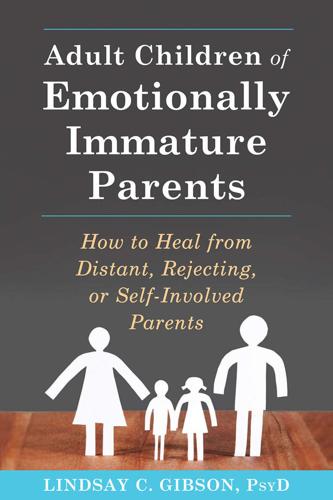
Adult Children of Emotionally Immature Parents: How to Heal From Distant, Rejecting, or Self-Involved Parents
by
Lindsay C. Gibson
Published 31 May 2015
In her article “Toiling in the Field of Emotion” (2008, 270), psychiatrist Harriet Fraad uses the term emotional labor to describe this effort to understand others: “Emotional labor is the expenditure of time, effort, and energy utilizing brain and muscle to understand and fulfill emotional needs. By emotional needs, I mean the human needs for feeling wanted, appreciated, loved, and cared for. Individuals’ emotional needs are often unspoken or unknown/unconscious. Emotional labor often occurs together with physical labor (producing goods or services), but emotional labor differs from physical labor by aiming to produce the specific feelings of being wanted, appreciated, loved, and/or cared for.”
…
She goes on to explain that some people don’t always realize they need emotional comforting, since emotional needs are often vague or subconscious. Other people might hide their need because they’re ashamed to admit it, so helpers must offer comfort tactfully and obliquely, allowing the person to save face. Emotional labor is hard work. People doing this work must also keep reading the other person to know if their efforts are effective. Many roles and occupations depend heavily on emotional labor, and if it’s done well, others hardly notice the effort involved. Good mothering is an example of this unsung labor, as are any number of service industry professions. Mature people take on the emotional work in relationships automatically because they live in a state of empathy and self-awareness.
…
Mature people take on the emotional work in relationships automatically because they live in a state of empathy and self-awareness. It’s impossible for them to overlook the fact that someone they care about is having a hard time. Doing this work allows them to successfully navigate all kinds of interpersonal situations without stepping on other people’s toes. Both at work and at home, emotional labor promotes goodwill and good relationships. Emotionally immature people, on the other hand, often take pride in their lack of this skill. They rationalize their impulsive and insensitive responses with excuses like “I’m just saying what I think” or “I can’t change who I am.” If you confront them with the fact that not saying everything you think is a sign of good sense or that people can’t mature without changing who they are, they will probably respond with anger or by dismissing you as ridiculous.

The Smart Wife: Why Siri, Alexa, and Other Smart Home Devices Need a Feminist Reboot
by
Yolande Strengers
and
Jenny Kennedy
Published 14 Apr 2020
These robots would do so instead of offering women the same opportunities as men or requiring men to reassess their commitments to the domestic space. There is another implicit devaluing of feminized labor present here too: the assumption that caring and emotional labors can and should be outsourced to a robotic deputy—a point we raised in the previous chapter in relation to delegating housekeeping labors. Such an assumption can itself be viewed as a form of undermining and simplifying the highly complex roles and tasks that (mainly) women perform as nurturers, carers, and emotional laborers. Not insignificant here is the fact that the gender more likely to have need of this robotic labor is women (though significantly, not necessarily more likely to afford or have access to it).
…
By “wife,” we refer to an enduring archetype in the collective psyche—one who can take on all forms of domestic work within the home.8 In the past and present, and at her most reduced, a wife has been both social construct and commodity, and viewed as the property of a man. Her roles include that of caregiver, housekeeper, homemaker, emotional laborer, provider of sexual services, and procreator of legitimate offspring. These roles are entrenched in thousands of years of patriarchy. Figure 1.1 Google Home in a kitchen. Source: Author The smart wife is figurative, not literal (although there are some examples of people actually marrying her that we’ll get to later in the book).
…
Human-computer interaction researcher and designer Ja-Young Sung and her colleagues found that robovacs were “perceived to be more useful to women than men,” and both men and women tend to give roombas to women.65 Similarly, research on kitchen robots like the Thermomix (an all-in-one cooking appliance capable of doing pretty much everything except cleaning itself) finds that they are more likely to interest women than men.66 (Curiously, the sales technique for this appliance also resembles the common 1950s’ practice of women-hosted Tupperware parties.)67 Similarly, advertising for smart kitchen appliances such as the June smart oven, a “do-it-all smart convection oven” (that talks to Alexa), and Amazon’s Alexa-enabled smart oven suggests women may be the target market for some domestic devices.68 More broadly, professor Leopoldina Fortunati’s research on the Special Eurobarometer survey on public attitudes toward robots—administered in 2012 to 26,751 citizens across twenty-seven European countries—found that women are more likely to welcome robots into their home than men (that is, if the robots are willing to do domestic work).69 Countries where women have a large responsibility for domestic chores—such as Italy, Portugal, and Malta in the South, Latvia and Lithuania in the northeast, and Slovakia, Bulgaria, and Romania in the East—were more supportive of the use of robots in the domestic sphere.70 This indicates that smart wives may be viewed as an easier and more practical way of easing traditional “women’s work” in these countries rather than getting men to pitch in. There may be some truth to this speculation. In her popular book Fed Up: Navigating and Refining Emotional Labor for Good, journalist Gemma Hartley cites UK survey data that expose how some men deliberately do a poor job at household tasks that they are assigned by their female partners in order to avoid further requests.71 Likewise, a consumer survey cited by Hartley found that women spend up to three hours per week redoing chores delegated to their partners.
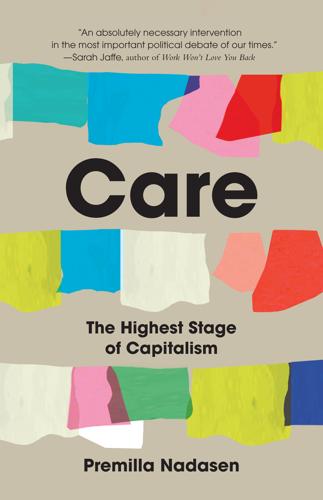
Care: The Highest Stage of Capitalism
by
Premilla Nadasen
Published 10 Oct 2023
Demands for emotional investment, they believed, were an indication of exploitation rather than cause for celebration. Sociologist Arlie Hochschild’s landmark book The Managed Heart, for example, referred to the expectation that workers care for the people they are serving as “emotional labor.” For Hochschild, emotional labor signified an unacknowledged form of capitalist exploitation: the production and management of human feeling for pay. This was especially important because of the growth of the service sector, where profits depend on the quality of service. That is, servers who project happiness and concern lead to satisfied customers and a more profitable business.
…
Federici, in her classic 1975 treatise Wages Against Housework, wrote that unpaid household labor was packaged and sold to women in terms of love, care, and family to mask oppressive and exploitative laboring conditions. Housewives were compelled to do housework, she suggested, because it was transformed into “an act of love.”44 The demand to care, then, was emotional labor. Paralleling Hochschild’s analysis of emotional labor in the context of paid employer-employee relationships, the Wages for Housework movement explored how familial love served as a form of coercion to justify no pay and was not only imposed but also internalized—women themselves came to believe that they did this work because of love.
…
The conflation of women’s work with “caring occupations” deters us from analyzing whether the work is about care—that is, whether care as praxis, affect, or emotion describes the labor.14 Not all women’s work is care work and not everything that falls under the rubric of “care work” actually involves caring for anyone. Occupations are included in or excluded from the category of caring labor with little regard for whether care—as emotional labor or as a practice—takes place. Nursing, education, and domestic work, as examples, are considered caring occupations. But research nurses don’t interact with patients. And labeling the work of nurses who do interact with patients as care downplays their medical training and skills, and encourages people to evaluate them on their personality rather than expertise.
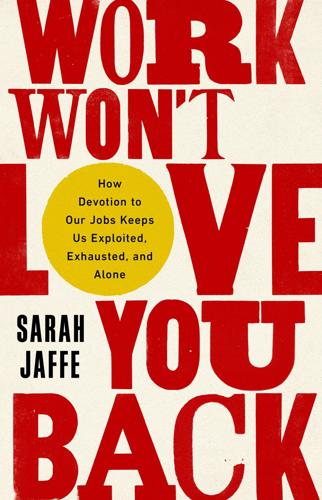
Work Won't Love You Back: How Devotion to Our Jobs Keeps Us Exploited, Exhausted, and Alone
by
Sarah Jaffe
Published 26 Jan 2021
The workers also could make occasional alliances with shoppers who, particularly in the Progressive Era (before World War I and the Depression), took an interest in social reform. 9 The work it takes to suppress one’s true feelings, to maintain a calm smile and the appearance of enjoyment, in order to maintain the customer’s mood is familiar to anyone who works with people. This work—which sociologist Arlie Russell Hochschild famously dubbed “emotional labor”—remains a major component of the retail salesperson’s job and a key difference between it and factory work. If you’re standing behind an automobile assembly line, it doesn’t matter if you smile or frown, but your failure to emanate a pleasant mood on the sales floor can ruin your workday (particularly if you rely on commissions or tips).
…
“Seeming to ‘love the job’ becomes part of the job,” Hochschild wrote, “and actually trying to love it, and to enjoy the customers, helps the worker in this effort.” 1 0 Such labor is deeply gendered: women are made responsible for others’ emotions off the clock, and that emotion management has become part of the job while punched in. Yet this distribution of emotional labor reflects the inequalities of the broader society. To manage your feelings in order to avoid imposing them on others is to place yourself in a subordinate position; to have to massage others’ feelings all day long is to get used to swallowing your own emotions and needs. Skill in this field is a skill learned from a life without power; it should not be surprising, then, that such a skill is rarely seen as a skill by the powerful, who expect deference as their natural right. 11 Even as women’s emotional skills were undervalued, by paying women a wage at all, retail bosses provided some recognition that they contributed something important.
…
The company rewarded its employees for faster scanning at the checkout counter, giving out pins to cashiers who could scan five hundred items per hour. That scanning efficiency meant sore wrists, certainly, but more importantly, more data for Walmart’s distribution system and just-in-time stocking practices. It also meant deskilling the workers and devaluing the very emotional labor it had learned to pay lip service to. 19 In the 1960s, John F. Kennedy made a raise for retail clerks a campaign promise and got it enacted into law. That was despite the opposition of conservatives like Barry Goldwater, himself the scion of a department-store family, and Sam Walton, who viciously opposed the minimum-wage increase and demanded that his managers ensure the stores remained union-free.

Why Women Have Better Sex Under Socialism: And Other Arguments for Economic Independence
by
Kristen R. Ghodsee
Published 20 Nov 2018
This vicious cycle provides a very good justification for government intervention.1 The perception of women’s comparative inferiority as workers is linked to their biological capacity for child bearing and nursing, and the concomitant social expectation that women will be the primary caregivers for babies and young children. And in some patriarchal fantasy world, our supposedly innate caring nature also makes us perfectly suited for nursing other sick, weak, or aged relatives. And since women are at home anyway, so the argument goes, we might as well do all of the shopping, cooking, cleaning, and emotional labor required to maintain a household, right? Someone has to do it, and that someone is almost always a woman, in part because the location of the tasks align, but also because she has been socialized from infancy to believe that it’s her natural role. Baby dolls, EZ Bake ovens, and toy vacuum cleaners allow girls to play-practice the labors they will perform when they grow up.
…
We are often exhausted and drained, unwilling to invest the emotional resources necessary to maintain loving relationships without compensation. I’m always stunned by the prevalence of young, college-educated women and men looking for “sugar daddies” and “sugar mommies” on websites like Seekingarrangement.com, or signing up with escort agencies to help pay for groceries. All relationships require some emotional labor, and young people are learning that they might as well get paid for doing it.24 Many will argue that there is nothing morally wrong with sex work, and it should be legalized, protected, unionized, and fairly compensated for those who freely choose to seek employment in this sector of the economy.
…
We must push back at the dominant ideology that mangles our social bonds into nodes of economic exchange. We can share our attentions without quantifying their value, giving and receiving rather than selling and buying. Women need to establish what I want to call “affective sovereignty,” to gain full control of our emotional labor. In the summer of 2017, the awning of a bookstore in Munich read, “Love kills capitalism.” If people are happy in their intimate lives, if they feel loved and supported for who they are rather than what they own, capitalism loses one of the most valuable tools it has: it can no longer convince us that we need to buy more things to fill the void left by our lack of personal connection.

Exponential: How Accelerating Technology Is Leaving Us Behind and What to Do About It
by
Azeem Azhar
Published 6 Sep 2021
This is perhaps even truer of supposedly ‘low-skill’ jobs than it is of ‘high-skill’ ones like a Wall Street trader. The anthropologist David Graeber was fond of pointing out that many jobs that we sometimes deem repetitive, task-oriented and perhaps easily automatable are, in fact, more like care work. They’re based less on specific tasks and more on human interaction and emotional labour. Think of a London Underground worker. In practice, this job isn’t so much about watching ticket barriers as it is about helping other humans – guiding confused tourists, ensuring lost children find their parents, explaining to angry commuters why their trains have been delayed. As Graeber put it, ‘It has more in common with a nurse’s work than a bricklayer’s.’27 This dynamic means that, in practice, much of the labour economists consider ‘unskilled’ might prove difficult to automate.

The Costs of Connection: How Data Is Colonizing Human Life and Appropriating It for Capitalism
by
Nick Couldry
and
Ulises A. Mejias
Published 19 Aug 2019
Herzfeld, Michael. “The Absent Presence: Discourses of Crypto-Colonialism.” The South Atlantic Quarterly 101, no. 4 (2002): 899–926. Hesmondhalgh, David. “User-Generated Content, Free Labour, and the Cultural Industries.” Ephemera 10, nos. 3–4 (2010). Hesmondhalgh, David, and Sarah Baker. “Creative Work and Emotional Labour in the Television Industry.” Theory, Culture & Society 25, nos. 7–8 (2008): 97–118. Hildebrandt, Mireille. “Balance or Trade-Off? Online Security Technologies and Fundamental Rights.” Philosophy and Technology 26, no. 4 (2013): 357–79. . Smart Technologies and the End(s) of Law. Cheltenham, UK: Edward Elgar Publishing, 2015.
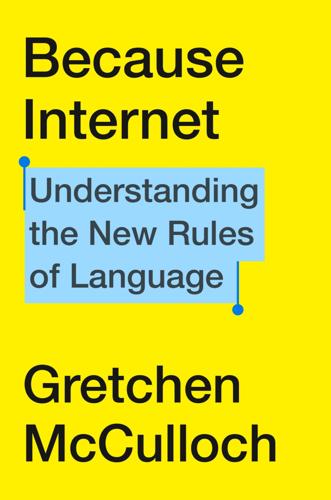
Because Internet: Understanding the New Rules of Language
by
Gretchen McCulloch
Published 22 Jul 2019
“In a diabolical omission”: (No author cited.) May 12, 2014. “Stone-Hearted Ice Witch Forgoes Exclamation Point.” The Onion. www.theonion.com/article/stone-hearted-ice-witch-forgoes-exclamation-point-36005. Emotional Labor: emotional-labor.email/. Reviewed in Jessica Lachenal. February 17, 2017. “Emotional Labor Is a Pain in the Butt, so This Gmail Add-On Does It for You on Your E-Mails.” The Mary Sue. www.themarysue.com/gmail-emotional-labor-add-on/. leetspeak: Anthony Mitchell. December 6, 2005. “A Leet Primer.” E-commerce Times. www.technewsworld.com/story/47607.html. A 2005 paper about leetspeak: Katherine Blashki and Sophie Nichol. 2005.
…
An article in the satire newspaper The Onion comically exaggerates the quasi-obligatory nature of the sincerity exclamation point: In a diabolical omission of the utmost cruelty, stone-hearted ice witch Leslie Schiller sent her friend a callous thank-you email devoid of even a single exclamation point, sources confirmed Monday. “Hey, I had a great time last night,” wrote the cold-blooded crone, invoking the chill of a thousand winters with her sparely punctuated missive. To solve this problem, Stone-Hearted Ice Witches might consider installing Emotional Labor, a Gmail add-on that promises to “brighten up the tone of any email”—largely by adding exclamation marks at the end of every sentence. I confess, I have recently been getting a kick out of deliberately replying to emails from people who don’t use exclamation marks without using any in return, rather than using one every other sentence, as is my usual practice for professional correspondence.
…
I confess, I have recently been getting a kick out of deliberately replying to emails from people who don’t use exclamation marks without using any in return, rather than using one every other sentence, as is my usual practice for professional correspondence. At first, it felt stiff—was I now a cold-blooded crone?—but after a while, I started enjoying how it seemed to increase my gravitas. After all, why should I tolerate an inequitable distribution of the typographical emotional labor? The situation with multiple exclamation marks is less stable. Hyperbolic adjectives lose their force through overuse (“awesome” is no longer the same as “awe-inspiring”), and hyperbolic punctuation seems to do the same. Multiple exclamation marks were considered part of an early internet slang known as leetspeak, which featured numbers and other special characters substituting for similar-looking letters, such as 1337 for “leet,” or “1 4m l33t h4x0r!”

Shadow Work: The Unpaid, Unseen Jobs That Fill Your Day
by
Craig Lambert
Published 30 Apr 2015
“Frankly, I have enough to do writing code. Why am I doing HR’s job?” Job descriptions are also expanding with “emotional labor,” a phrase Berkeley sociologist Arlie Hochschild coined in her 1983 book The Managed Heart. Emotional labor involves getting staff to fabricate states of feeling that put customers and coworkers in a positive mood. The worker must “induce or suppress feeling,” wrote Hochschild, to realize the sought-after effect in others. Pret A Manger, a London-based fast-food chain, has nearly made emotional labor into an aspect of management science, as Timothy Noah explained in The New Republic in 2013.
…
If the cashier displays enough bouncy enthusiasm, everyone in the place gets a bonus; if not, no one does. This system “turns peers into enthusiasm cops,” Noah writes, “further constricting any space for a reserved and private self.” In 1983, Hochschild estimated that one-third of jobs entailed substantial emotional labor; thirty years later, she pegged it at about one-half. The attitudinal shadow work isn’t limited to fast food but extends throughout the service economy to nail salons, healthcare, dry cleaners, and auto rental. This could help women in the job market, as females learn early in life how to please others; it may also help explain why men often fail to prosper in the service economy.

The Lonely Century: How Isolation Imperils Our Future
by
Noreena Hertz
Published 13 May 2020
This wasn’t the career path Brittany, a 23-year-old small-town Floridian, had intended when she had won her place at Brown. Yet having been unable to secure a job in environmental science (the subject she had majored in at university), and anxious about her levels of student debt, she explains her decision to rent out her company as a pragmatic one, her emotional labour as just another monetisable string to her bow. When she’s not renting herself out – on average she does so a few times a week – she helps start-ups with their social media postings and offers executive assistant services via TaskRabbit. Before we met up I was pretty nervous, not sure if ‘friend’ was covert speak for sexual partner or even if I’d recognise her from her profile picture.
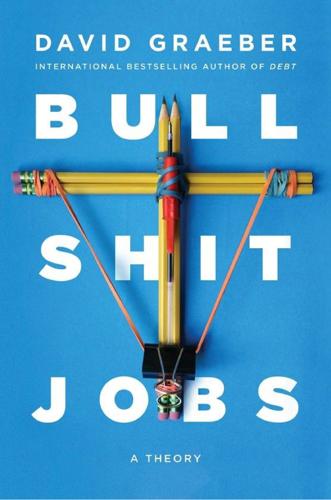
Bullshit Jobs: A Theory
by
David Graeber
Published 14 May 2018
In a classic study of Delta Airlines flight attendants, The Managed Heart: Commercialization of Human Feeling, sociologist Arlie Russell Hochschild introduced the notion of “emotional labor.” Hoschschild found air hostesses typically had to spend so much effort creating and maintaining a perky, empathetic, good-natured persona as part of their conditions of employment that they often became haunted by feelings of emptiness, depression, or confusion, unsure of who or what they really were. Emotional labor of this sort is not limited to service workers, of course: many firms expect such work even in inward-facing office workers—especially women.
…
On the social level, duct taping has traditionally been women’s work. Throughout history, prominent men have wandered about oblivious to half of what’s going on around them, treading on a thousand toes; it was typically their wives, sisters, mothers, or daughters who were left with the responsibility of performing the emotional labor of soothing egos, calming nerves, and negotiating solutions to the problems they created. In a more material sense, duct taping might be considered a classic working-class function. The architect may come up with a plan that looks stunning on paper, but it’s the builder who has to figure out how to actually install electrical sockets in a circular room or to use real duct tape to hold things together that in reality simply don’t fit together the way the blueprints say they should.
…
Emotional labor of this sort is not limited to service workers, of course: many firms expect such work even in inward-facing office workers—especially women. In the last chapter, we observed Patrick’s indignation at first encountering the demand to pretend to enjoy being a cashier. Now, flight attendant is not a bullshit job—as I’ve observed, few service workers feel that the services they provide are entirely pointless. The kind of emotional labor required by those in most bullshit jobs, however, is usually rather different. Bullshit jobs, too, require maintaining a false front and playing a game of make-believe—but in their case, the game has to be played in a context where one is rarely quite sure what the rules are, why it is being played, who’s on your team, and who isn’t.

Marx at the Arcade: Consoles, Controllers, and Class Struggle
by
Jamie Woodcock
Published 17 Jun 2019
In an industry that puts so much emphasis on passion, the “unspoken heart of [the journalists’] criticism is the failure on the part of the publicist to adequately conceal that she is performing emotional work for money.”34 Yet without this form of work, videogames could go unnoticed, despite the quality of work put in through the development stage. Another aspect of this kind of relational or emotional labor is found in the work required to maintain videogame communities, with more women likely to be working in these roles than in the field of development.35 This work includes in-game support, online forums, message boards, meet-ups, conventions, and so on. For example, community management has grown significantly as companies recognize the importance of communities for the long-term sustainability of videogames.
…
The managerial practices of crunch feed directly into this issue, with the “long-hours culture” acting as both a cause and effect of the institutionalized sexism in the industry.91 Those with caring responsibilities, who are overwhelmingly women, find it harder to work such long days, which means this kind of work can become off limits for them. They therefore face direct barriers that are the result of sexism. These take the form of a “glass ceiling” preventing career progression, but also as additional pressures in terms of the “classic invisible role of reproductive labor, covering the deficit of household tasks and emotional labor of which [women’s] exhausted partners are incapable.”92 Regarding the lack of diversity, the 2017 IGDA survey suggested that it is less a concern for people hiring workers than it is for the workers themselves. The question of “whether or not diversity was important” generated the highest number of responses in the history of the survey: 81 percent felt it was “very important” or “somewhat important.”93 In part, this sentiment comes from the experiences that workers have in the workplace, through bias they perceived either toward themselves or others.
…
After all, poor performance could result in my sacking with little or no notice. And there were more sophisticated forms of gamification the managers deployed to try and motivate workers. For example, workers were asked to play games before a shift to as a way to coax workers into a mood conducive to performing emotional labor on the phones. Other kinds of competitions would be organized, either between individual workers or teams, with prizes or penalties as incentives. In what would later turn out to be a revealing finding, the most powerful incentive to make a sale was the reward of being able to leave early. No other prize—claiming the top spot on the leader board, winning shopping vouchers, or anything else—could motivate people as much as not having to stay in that gamified workplace.1 Within the other research project I worked on, there was no recognition at all of the extensive reach of gamification.
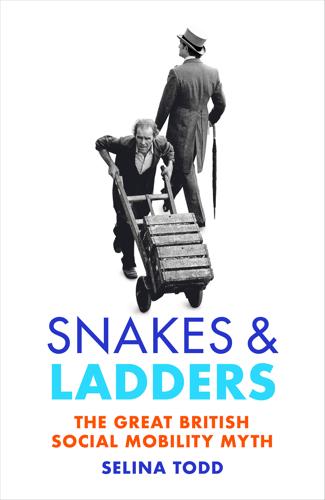
Snakes and Ladders: The Great British Social Mobility Myth
by
Selina Todd
Published 11 Feb 2021
They aspired to middle-class status for themselves – the accoutrements of affluence meant a great deal to men and women who had grown up in poverty. A house, a car and private school for the children could also be important signs to themselves and others that their hard work had paid off. But many of them discovered that the stress, striving and boredom that a manager’s job entailed, and the loneliness and emotional labour of being a manager’s wife, were not entirely satisfying. They wanted their children to experience greater autonomy, enjoy more fulfilling work and, above all, to get an education. They looked to university and the professions to provide chances that they, materially successful as they were, so often regretted the lack of.

Four Futures: Life After Capitalism
by
Peter Frase
Published 10 Mar 2015
There is, throughout the book, a constant conflation between work that is rewarded with social prestige—by being regarded as a “job” and remunerated with a wage—and work that is materially necessary in the sense that it reproduces society and secures the conditions of life. The women in the book continue to perform the unpaid caring and emotional labor that has always been expected of them, and Vonnegut seems not to care whether this is important or a source of meaning for them. The protagonist of Player Piano is Paul Proteus, a well-regarded factory manager who becomes a disillusioned critic of the system. Late in the book, he helps draft a manifesto that calls for rolling back automation on the grounds that “men, by their nature, seemingly, cannot be happy unless engaged in enterprises that make them feel useful.”1 But throughout the novel, Paul’s wife Anita has been engaged in something apparently useful—namely, compensating for Paul’s social ineptitude, and propping up his self-confidence.
…
Not surprisingly, this approach is already being developed in Japan, an aging society with deep expertise in the technologies of cuteness and robotics. However, Tufekci’s critique also touches on something more profound, which goes beyond the questions of work and automation. This is what Tufekci calls “deep emotional labor: taking care of each other.” Taking care of each other, overcoming our isolation and loneliness, is at the essence of being human. But is what we want a world where we are all paid for that activity? Or one where we are freed from the need to work for wages so we can explore what it means to take care of ourselves and one another?

Pedigree: How Elite Students Get Elite Jobs
by
Lauren A. Rivera
Published 3 May 2015
In fact, studies that have microlevel data on the gender and race of both job candidates and those making the hiring decisions show inconsistent effects ranging from positive to negative to no effect. See Huffcutt 2011; Rudman 1998. 12. Sociologist Arlie Hochschild (1983) terms such tensions between the emotional displays expected of particular job roles and those actually felt by the incumbent while on the job as emotional labor. There are several strategies that individuals can use on the job to manage this clash. One is to engage in surface acting, or superficial compliance with the feelings rules expected of specific employees (see also Pierce 1995). Strategies and emotion management techniques can be psychologically and physically draining and can potentially exacerbate inequalities within occupations and careers.
…
Addressing methodological issues of interviewing elites, sociologist Susan Ostrander (1993) noted that a hallmark of elites is that they tend to begin research interviews by interviewing the researcher. 25. For example, in her classic study The Managed Heart, Arlie Hochschild (1983) found that airplane flight crews were hired for their ability to engage in surface acting, presenting a consistently cheerful attitude to passengers. Such sustained performance required a large amount of emotional labor that could take a toll on employees’ well-being. Different organizations and industries have different emotion cultures. For instance, the emotional displays that would be desirable in a candidate interviewing for a position as a flight attendant for Southwest Airlines, whose strong organizational culture emphasizes fun and kookiness, would likely differ significantly from those considered desirable in a candidate seeking a position at a white-shoe law firm.
…
See also investment banks; law firms; management consulting firms elite reproduction, 1–27, 267–68, 274–85, 341n2; culture and, 6–10, 268–69; education and, 2–14, 271–74; interviewer variation and, 18–19; merit and, 8–10, 86–87, 148, 181–82, 275–76, 318nn44–46; nontraditional hires and, 27, 251, 253–66, 276, 281–82, 341nn3–4; subjective impressions and, 8, 22, 137, 270–71, 317n40, 321n97, 342nn8–9; system of nomination in, 325n39; workforce sites of, 2–3, 14–16, 25–27. See also class; cultural capital; economic capital; hiring committee deliberations; social capital elite schools. See core and target schools; listed schools emotion, 154–55, 176–78, 334n10, 336n25 emotional labor, 132, 331n12, 336n25 emotional matching, 178, 270 employers. See elite professional service (EPS) firms; hiring theory entrainment, 335n23 EPS firms. See elite professional service (EPS) firms equal opportunity legislation, 275–76 equitable interview processes, 284t Erickson, Bonnie, 172 Espeland, Wendy, 77–78 ethnicity.

The Manager’s Path
by
Camille Fournier
Published 7 Mar 2017
Look for someone that you believe can succeed in the role, and who wants to distinguish herself beyond her coding ability. Whatever the source of the mentoring arrangement, common mentoring pitfalls include viewing it as a low-status “emotional labor” position, assuming that “like” must mentor “like,” and failing to use the opportunity to observe potential on your team firsthand. Emotional labor is a way to think about traditionally feminine “soft skills”— that is, skills that address the emotional needs of people and teams. Because the outcome can be hard to quantitatively measure, emotional labor is often dis- MENTORING | 23 missed as less important work than writing software. It’s assumed to be something that should just be provided without financial recognition.
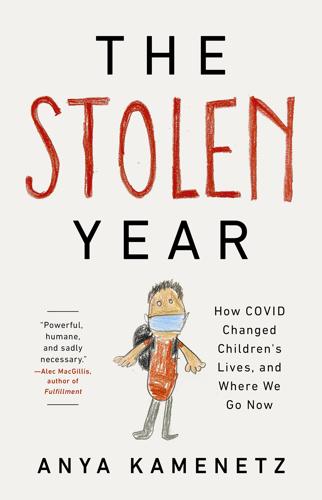
The Stolen Year
by
Anya Kamenetz
Published 23 Aug 2022
Caring, a natural resource, like water or trees—neglected, overexploited, endangered, like water or trees. Nancy Folbre, another feminist economist, in her masterwork The Invisible Heart, says care is systematically devalued exactly because it is priceless. We want the person who cares to really care. Emotional labor is part of the work. We don’t want people who are in it for the money. A wrenching scene illustrating Folbre’s point comes from Miranda July’s 2020 movie Kajillionaire. It’s about a family of cold, craven, sociopathic grifters. At the climax, the grown daughter suddenly realizes the perversity of how she was raised.
…
In short, women tended to be more worried about coronavirus. They did more of the work to keep everyone safe. That contributed, in a vicious cycle, to their being more worried, as well as more tired. Men were more likely to be exempted from all of the above. COVID AND THE MENTAL LOAD COVID was constant risk recalculation, backup plans, emotional labor, fear, uncertainty, and doubt. Do I send the kids to school or daycare or keep them home? Do I order takeout? Wipe down my groceries? Is it OK to see Grandma with masks on? Are my friends on the group text mad at me? Is my daughter just in a mood or is she depressed? Is that tickle in the back of my throat COVID?
…
Brigid Schulte, a journalist for the Washington Post, published a book in 2014 called Overwhelmed: Work, Love, and Play When No One Has the Time and revealed that, actually, it was moms who didn’t have the time, because dads were taking it. She started the Better Life Lab at the liberal think tank New America to try to engage families in negotiating better divisions of labor: through chore charts, shared calendars, and family meetings. Unfortunately, it often falls to mothers to do the emotional labor of introducing, selling, and enforcing these systems, an imbalance Schulte, when I talked to her, didn’t have a good solution for. Eve Rodsky was working as a mediator, had a toddler and a newborn, and was living a privileged but hectic life in Los Angeles. One day she was driving to a client meeting with her breast pump and diaper bag when her husband texted her, “I’m surprised you didn’t get blueberries.”

To Serve God and Wal-Mart: The Making of Christian Free Enterprise
by
Bethany Moreton
Published 15 May 2009
Let them know you’ll listen to what they have to say.” With a certain lack of subtlety, this became the ofÂ�fiÂ�cial “We Care” program, a promise to employees that raising concerns with management would not result in retribution.52 Only gradually did Wal-Â�Mart learn from its employees and its customers to stress the emotional labor of serÂ�vice alongside the tight cost controls that had always taken the limelight. Customers were explicit about what they valued in the serÂ�vice relationship. In 1979, a first-Â�time Wal-Â�Mart shopper wrote to praise a checker for “show[ing] a true interest in evÂ�ery customer that came through her aisle,” and emphasized the evident sincerity of the woman’s concern.53 A woman on a driving trip stopped at a Missouri store to buy an embroidery pattern and thread, and then realized she had no way to transfer the pattern to the material.
…
By submitting, they were rewarded with “husbands and fathers who forswear drinking, drugs, smoking, and gambling, who lovingly support their families by steady work, and who even choose to go shopping with them as a form of Christian serÂ�vice.”56 This was a particularly attractive accord since “submission” in practice boiled down to little more than a rhetorical gesture at the husband’s final say on major decisions. When asked how it played out in marriage, few conservative Christians seemed able to recall an example where husbands acÂ�tually pulled rank in decision-Â�making. Instead, the couples coded expressiveness—emotional labor—and family responsibilities— reproductive labor—as “leadership” to make them newly palatable to men. Bill McCartney, founder of Promise Keepers, explained on the TV show Larry King Live that “We’re not talking about lording authority. We’re talking about servanthood. There’s a big difference there.”57 Speaking at a 2003 Promise Keepers rally, Bishop Wellington Boone, author of such bestselling Christian family advice manuals as Your Wife Is Not Your Momma, demanded of his multiracial all-Â�male audience, “Who is the servant in your house?
…
By elevating domesticity as an ideal for ev�ery�one regardless of sex, conservative Christianity gave �women a powerful tool to redress some of the imbalance, while providing conservative Christian men with a new jus�tifi�ca�tion for their precedence.59 It would be easy to overstate the concrete advantages of this ideology to married mothers. The difference was fairly subtle in terms of a€measurable addition to household labor. Though they evidently did spend more time in one-�on-�one activities with their children and undertake more of the emotional labor of parenting than more mainstream Prot� es�tant or unaffiliated men, churchgoing evangelical men were not shown to perform sig�nifi�cantly more housework than their nonevangelical peers, which is to say about a half of what wives did regardless of paid employment.60 What the model of Christian servant leadership did offer was two sets of sig�nifi�cant if intangible bene�fits.

Practical Anarchism: A Guide for Daily Life
by
Scott. Branson
Published 14 Jun 2022
Instead, we can shift away from the term work to rediscover the deep joy she mentions in the seemingly simple tasks of helping each other meet our basic needs while actually receiving support and care. As for the work part of caring, Piepzna-Samarasinha imagines a “fair trade exchange” of feminized emotional labor. This exchange highlights the need to recognize limits of what you can take on for another person. But the simple revolutionary response Piepzna-Samarasinha notes for the kind of care work we do for each other can even just be recognition and gratitude (if not actual monetary wages for housework).
…
We are continually asked to take our attention away from the ways we actually live, in order to put all of our effort into surviving according to the system’s own needs. Disabled time is a refusal to clock in that allows for the expansion of these moments of mutual care that actually contribute to our living on in the world. In Care Work, Leah Lakshmi Piepzna-Samarasinha propose a “fair trade emotional labor economy” that centers the experience of queer/disabled femmes of color, since people fitting these categories are typically put in the place of being expected to do necessary things for free. She describes the organizing of care as a “superpower” of sick and disabled people, navigating a world that is not only actively built towards our failure but intrudes on our autonomy.
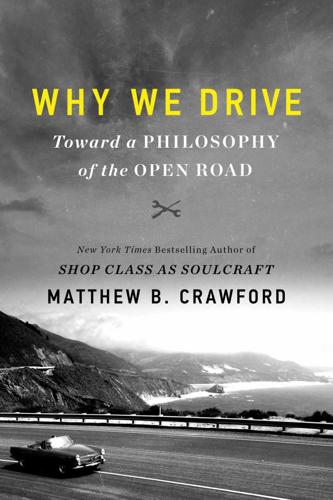
Why We Drive: Toward a Philosophy of the Open Road
by
Matthew B. Crawford
Published 8 Jun 2020
See also drivers air travel compared to, 6–7 body language of, 105 distracted, 235 emotional labor when, 241 German laws of, 25–26 reckless, 230–232, 238–240 road rage. See road rage as routine, 9 types of, 8–9 utopian experiment, 25–27 dual-circuit master cylinders, 91–92 Dupuy, Jean-Pierre, 279 Easy Rider (film), 24–25 ecology of attention, 26–27 economic sovereignty, 30–31 economy. See political economy effort-driven rewards, 64–65 Egan, Peter, 67 Eisenhower administration, 38 electroless nickel plating, 152 electronic stability control, 92 Emanuel, Rahm, 220–221 embodied cognition, 59, 61, 93, 112, 244 emissions reduction, 77–78 emotional labor, 241 emulation, 170 energy-absorbing steering columns, 90 episodic memory, development of, 13 Esperanto meritocrats, 272 ethical dilemmas, 117 European Commission, 95 Eves, Edward, 140 existential politics, 272–273 external scaffolding, 257 face-to-face orientation, 252–253, 255 false environmentalism, 83 Fatality Analysis Reporting System, 228 fathers, 182–183 Fear and Loathing in Las Vegas (Thompson), 207–208, 215–216 Federal Highway Administration (FHWA), 223 Feeney, Matt, 297 female riders, hare scramble race, 192–194 Ferdinand, Franz, 137 Fersen, O.
…
What are they waiting for? Well of course they are waiting for the light to change. We do a lot of this. If you are in a hurry, or as prone to impatience as I am, to sit there for minutes when you can see perfectly well the approach of cars from every direction, or the absence thereof, requires a certain amount of emotional labor. There is a conflict between what feels natural and reasonable in the particular circumstances—the emptiness of the intersection invites movement—and the law, which is indifferent to these circumstances. You feel this as an arbitrary restriction on the movement of your body, like an animal trapped in a Plexiglas enclosure: the barrier has no earthly features, and doesn’t make sense to your body.
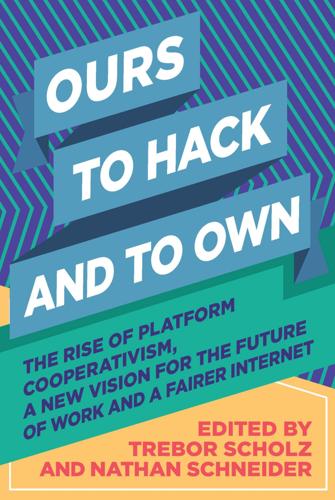
Ours to Hack and to Own: The Rise of Platform Cooperativism, a New Vision for the Future of Work and a Fairer Internet
by
Trebor Scholz
and
Nathan Schneider
Published 14 Aug 2017
In this context, our emotions are more like “laughing alone with salad” and less like singing together in Odisha’s forests. The real issue with emotions lies with the conditions in which they are extracted. Emotions on the Internet can be better understood with Arlie Hochschild’s theory of “emotional labor,” which describes how we adapt our emotional expressions in deep and superficial ways to align with workplace rules. While Singh found villagers laboring happily, defying market logic, Hochschild argued more than thirty years ago that emotions get commodified in a capitalist service economy. Looking at how emotions change over time, however, shows how people become invested.
…
Service providers on a platform with a reputation system live in a Panopticon—always being watched, always being assessed. It’s like living in an environment covered by unreliable CCTV cameras, which record images that may or may not reflect reality. Faced with the threat of a bad review, some service providers engage in compliant, indulgent, “emotional labor,” catering to the whims of their most entitled customers. Drivers may or may not be good drivers, but they probably will not show it if they are in a bad mood. Bad reviews often have little to do with an objective evaluation; such systems have been shown to reflect and hence perpetuate patterns of prejudice among those doing the ratings.

Death Glitch: How Techno-Solutionism Fails Us in This Life and Beyond
by
Tamara Kneese
Published 14 Aug 2023
Feminist theorists have criticized the autonomist Marxist portrayal of immaterial labor as having to do more with the end product than with the relational aspect of exchange and production.61 Care labor, whether paid or unpaid, is a way of reinserting materiality and embodiment into discussions of post-Fordist labor.62 Not only is hospital workers’ labor physical, as in the acts of changing bandages or helping a patient eat, drink, or use the bathroom, but their emotional reaction to the work is also embodied, constituting what the sociologist Arlie Hochschild calls “emotional labor.”63 Managing one’s own emotional responses to keep a patient’s spirits up is part of the job. Thus, it is impossible to separate both material and digital forms of care from power relations. Some of the literature around care labor speaks to the ambivalence inherent to this kind of work, while other theories focus on low wages and care labor’s relationship to stereotypes of feminine nurturing or the concept of the care worker as a “prisoner of love,” motivated to work for low wages for altruistic reasons.64 Care for the self can also be a form of relational labor, but this is complicated by stereotypes about feminine nurturing tendencies, which can be applied to caregivers of any gender.
…
See also digital death care practices; digital estate planning; digital memorialization practices digital thrownness, (i) Dinkins, Stephanie, (i), (ii) domain names, (i) domestic violence, (i) Douglass, Frederick, (i)n11 Dubal, Veena, (i) Eagleman, David, (i) Electronic Frontier Foundation, (i), (ii)n24 Ellsworth, Justin, (i) emotional labor, (i) Eno, Brian, (i) Entrustnet, (i) ephemerality. See platform temporality essential workers, (i), (ii), (iii) Estate Assist, (i) estate law, (i) estate planning, (i), (ii), (iii), (iv). See also digital estate planning Eterni.me, (i) European Union (EU), (i) Facebook: demographics of, (i); digital memorialization practices and, (i), (ii), (iii), (iv), (v), (vi), (vii); early history of, (i), (ii), (iii), (iv); memorialization policy and, (i), (ii), (iii), (iv), (v); metaverse and, (i); privacy rights and, (i); safety-check feature on, (i); Virginia Tech shootings (2007) and, (i), (ii), (iii), (iv), (v), (vi) Farman, Abou, (i), (ii), (iii) Federici, Silvia, (i)n62 Financial Analysts Federation, (i)n20 Floyd, George, (i) Foley, Kevin, (i), (ii), (iii), (iv) Forbes (magazine), (i) Forlano, Laura, (i) Forsén, Lena, (i)n72 Friendster, (i), (ii)n37 Gates, Bill, (i), (ii) Gebru, Timnit, (i)n72 Gemmell, Jim, (i) General Data Protection Regulation (GDPR), (i) Germany, (i) Get Your Shit Together (GYST), (i) Gibson, William, (i)n46 The Gift (Mauss), (i) gift giving, (i) Gig Workers Collective, (i) Gilliard, Chris, (i)n27 GitHub, (i) glitches, (i).
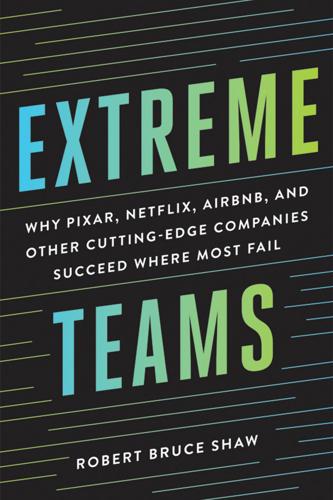
Extreme Teams: Why Pixar, Netflix, AirBnB, and Other Cutting-Edge Companies Succeed Where Most Fail
by
Robert Bruce Shaw
,
James Foster
and
Brilliance Audio
Published 14 Oct 2017
This occurs because women, based on social norms, are viewed by many as being more communal and caring than men. As a result, they are expected, although it may never be stated as such, to do more of the work of building and sustaining relationships at work. Some refer to this, when it impacts the workplace, as emotional labor. This work requires taking the time to ensure that people connect with one another and do what is needed to ensure that the work environment fosters collaboration. The end result can be that women, particularly if relationships are emphasized within a company, become burdened more than men in building relationships.
…
cognitive and emotional of community defining development of, for cultural fit and emotions obsession with at Pixar of playfulness soft vs. hard at Starbucks strong vs. weak themes for of transparency at Whole Foods “culture deck,” of Netflix dailies, at Pixar “demo days,” at Airbnb Disney, Walt Disney Animation creative process in culture change at as failing team distractions, from key priorities double-bind Dropcam Duckworth, Angela, on grit eBay Edmondson, Amy on psychological safety on types of teams Elliott, T. S., on risk emotional contagion emotional culture emotional labor emotional skills emotions employees at Amazon engagement of finding meaning at work at Netflix removing underperforming toxic Enron entrepreneurs ethical issues exchange relationships experimentation, with priorities Face Game (at Zappos) face saving Fadell, Tony, on personnel management failing teams failures, learning from Feintzeig, Rachel Fey, Tina, on hiring Finding Dory (film) Finding Nemo (film) focus on key conflicts on key priorities Folkman, Joseph freeloaders Full Spoon program future planning and experimentation with priorities at Netflix at Pixar gender differences goal setting Goffman, Irving, on face saving Google innovation at psychological safety at Graham, Paul on obsession with company on obsession with work Grant, Adam, on gender differences grit groupthink Hackman, Richard on power on problems of teams hard culture Hastings, Reed on culture of Netflix as founder of Netflix on future of Netflix on priorities on relationships vs. results Heckscher, Charles, on common goals Heilman, Madeline E.

Squeezed: Why Our Families Can't Afford America
by
Alissa Quart
Published 25 Jun 2018
In my conversations with her, she noted the unpaid work that women do: as they cook and clean, smiling and often bending over backward to please in social situations, in the workplace, and in their intimate partnerships, women ultimately lose some of their earning power. She murmured that women’s domestic and emotional labor in the home could be considered a form of domestic violence. This sounded extreme. But don’t women generally deserve some greater reward for the invisible domestic, caring, and emotional labor we do, either that which is poorly paid or underpaid? I was so pleased to hear a radical counterpoint to concepts like “leaning in” and all the other mainstream memes about female corporate empowerment.
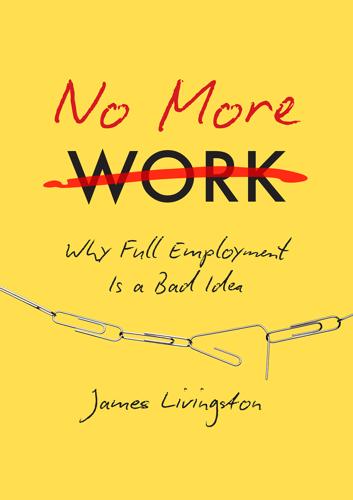
No More Work: Why Full Employment Is a Bad Idea
by
James Livingston
Published 15 Feb 2016
As men are laid off from old-fashioned, goods-producing jobs because they lost their race against the machine, and as traditionally women’s work—social work, health care, education—becomes the norm in the labor market, does the market price of labor time regress to the mean determined by the long-standing wage gap between males and females? Put it in the terms the pathbreaking sociologist Arlie Hochschild proposed many years ago: Why doesn’t “emotional labor” pay a living wage? Or put it this way: Has most labor time become, practically speaking, worthless, because the market can register the cost of socially necessary labor time and compensate its performance accordingly, but can’t let us reward socially beneficial labor time—what has long been characterized, dismissed, or denigrated, as “women’s work”?
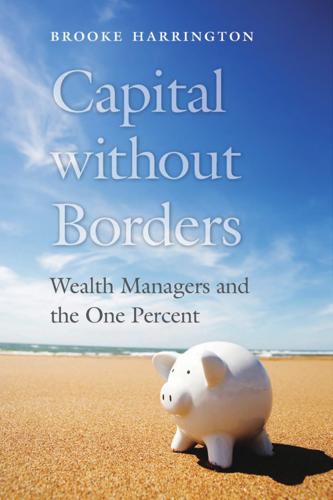
Capital Without Borders
by
Brooke Harrington
Published 11 Sep 2016
Perhaps in recognition of the special intimacy and trust conferred on these professionals, the 1989 Guernsey Trusts Law states that a fiduciary must “observe the utmost good faith and act en bon père de famille”—a French phrase that translates literally as “good father of a family.”14 In practice, wealth managers are “usually recruited in a very personal way” by the actual fathers (rarely mothers) of high-net-worth families, with the relationship cultivated carefully to ensure that the professional represents the wishes and interests of the father after his death.15 Some scholars have interpreted this in purely rational-bureaucratic terms: “The work of the fiduciary … occupies, after the death of the family founder, the place of abstract patriarchal authority in a family, but what family beneficiaries literally trust is not an object or person imbued with positive family values such as love, amity and warm feelings, but a cold, rational construct of wealth—the trust and its trustee.”16 However, this instrumental view is belied by the statements of participants in this study, who repeatedly emphasized that trusting client relationships hinged on mutually experienced bonds of emotion. For example, Elaine in Dubai described her client relationships in terms that emphasized the emotional labor and caring involved: “They’re asking you to take care of their family. You can’t just think of it as another piece of business.… It’s not just a matter of signing documents; it’s the whole concept of doing the right thing for that family. You have to be able to say, ‘Mr. A., don’t worry—your kids are all going to be put through university.
…
Chan, “Creating a Market.” 64. Haynes, “Body Beautiful?” 65. Brooke Harrington, “The Social Psychology of Access in Ethnographic Research,” Journal of Contemporary Ethnography 32 (2003): 592–625. 66. Macdonald, “The Sociology of the Professions,” 188. 67. Kathryn Lively, “Client Contact and Emotional Labor: Upsetting the Balance and Evening the Field,” Work and Occupations 29 (2002): 198–225. See also Erving Goffman, Asylums (New York: Doubleday, 1961). 68. Rachel Sherman, “ ‘Time Is Our Commodity’: Gender and the Struggle for Occupational Legitimacy among Personal Concierges,” Work and Occupations 37 (2011): 81–114. 69.

Brotopia: Breaking Up the Boys' Club of Silicon Valley
by
Emily Chang
Published 6 Feb 2018
The point isn’t that any one comment or incident is going to push a woman out of tech or make her miserable at work. It’s the constant emotional labor that she has to perform, day after day, just to keep her job and do her work. Often, women will not immediately blame sexism if they feel they are being mistreated or overlooked, rather they question themselves. “Did I do something wrong? Or, was I not clear enough?” they might think. These concerns wear constantly on self-esteem. Pushing against a stereotype is emotional labor that men, white men in particular, don’t have to perform. Instead, they can use that energy to focus on being a great engineer.
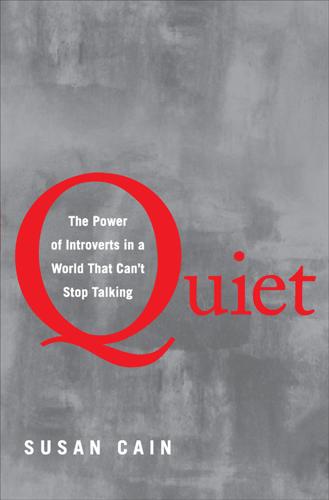
Quiet: The Power of Introverts in a World That Can't Stop Talking
by
Susan Cain
Published 24 Jan 2012
Double pneumonia and an overscheduled life can happen to anyone, of course, but for Little, it was the result of acting out of character for too long and without enough restorative niches. When your conscientiousness impels you to take on more than you can handle, you begin to lose interest, even in tasks that normally engage you. You also risk your physical health. “Emotional labor,” which is the effort we make to control and change our own emotions, is associated with stress, burnout, and even physical symptoms like an increase in cardiovascular disease. Professor Little believes that prolonged acting out of character may also increase autonomic nervous system activity, which can, in turn, compromise immune functioning.
…
“a Free Trait Agreement”: See, for example, Brian Little and Maryann F. Joseph, “Personal Projects and Free Traits: Mutable Selves and Well Beings,” in Personal Project Pursuit: Goals, Action, and Human Flourishing, edited by Brian R. Little et al. (Mahwah, NJ: Lawrence Erlbaum Associates, 2007), 395. 13. “Emotional labor”: Howard S. Friedman, “The Role of Emotional Expression in Coronary Heart Disease,” in In Search of the Coronary-Prone: Beyond Type A, edited by A. W. Siegman et al. (Hillsdale, NJ: Lawrence Erlbaum Associates, 1989), 149–68. 14. people who suppress negative emotions: Melinda Wenner, “Smile!
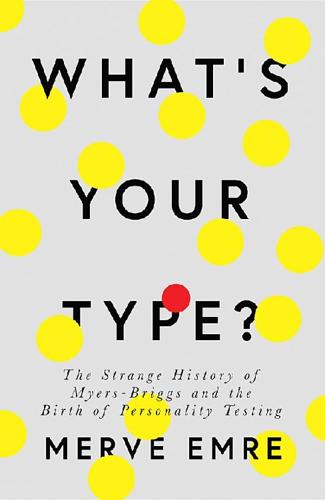
What’s Your Type?
by
Merve Emre
Published 16 Aug 2018
There was still dinner to cook, still dishes to wash, still kitchens to tidy up, and, for many, still children to feed and bathe and put to bed. By the end of the summer, Isabel was one of the nation’s eight million married women who now worked outside her home, and she prided herself on her ability to juggle the different varieties of physical and emotional labor that she performed. On Friday afternoons when she finished her week at the cement company, she rushed to see Chief at flight camp, where she spent the weekend entertaining her husband and his army buddies with all the charm she could muster. It was tiring work, but she persisted in it until the end of the summer, when she returned to Swarthmore to start her senior year.
…
But now she wanted to do something to help herself and to shake her fears, something more suited to her “intellectual capabilities,” she told her mother, than the typical jobs assigned to women on the home front. She was not used to reckoning with such strong feelings of despair. For her, the personal did not seem truly political: not when she gamely defended socialist revolutionaries in college; not when she acknowledged, with a smile and a shrug, the emotional labor that she performed for her husband and his fellow officers at flight camp. Until the end of the war, her experience of the world seemed buffered from anything that did not directly affect her home or her family. There was nothing of note in her “Diary of an Introvert Determined to Extravert, Write, & Have a Lot of Children” after the publication of Give Me Death in 1934.
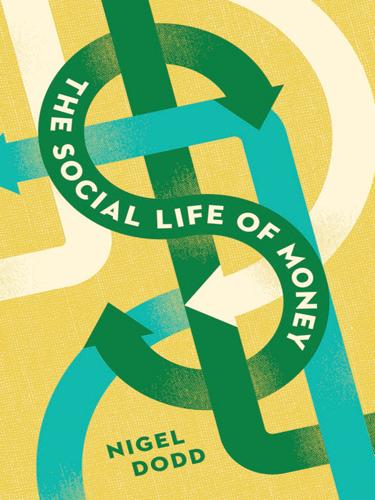
The Social Life of Money
by
Nigel Dodd
Published 14 May 2014
This position is similar to that associated with post-Fordism and put forward by Christian Marazzi, who (like Negri) was closely linked with Autonomia Operaia (see Chapter 2). This position is the view that capitalism has drawn not just economic but also qualitative, social relations into its nexus: as emotional labor, for example. “Empire is the non-place of world production where labour is exploited … The non-place has a brain, heart, torso, and limbs, globally” (Hardt and Negri 2001: 210). Within Empire, all social relationships are malleable, just as territorial borders are permeable. Old, quasimetaphysical notions of natural difference and hierarchy are swept away by the political forces of globalization.
…
See also currency wars; internal devaluation difference, in Deleuze and Guattari, 227–28; in Derrida, 227 digital money, 36, 41–43, 47, 214, 307 Dionysus, 136, 154, 155, 205, 251, 351; and money, 142, 175 direct monetary financing, 131 Discover, 377 disintermediation, 352, 363, 370, 379 division of labor, 63, 150, 151, 234, 324 Doctorow, Cory, 381 Dogecoin, 370n40 dollar, United States, 99, 299, 302 dollarization, 214 Douglas, Clifford Hugh, 355–57, 372, 382 Douglas, Mary, 283 Douglas Credit Party, 357 Douglass, Frederick, 222 Douthwaite, Richard, 374–76 Dow, Sheila, 106n19, 213n4 Dubief, Henri, 172n Dumas, Charles, 207–8 Durkheim, Émile, 46, 170, 173; on prices, 16; on religion, 15, 101, 308; on sacrifice, 167–68; on the social basis of contract, 31; on society, 8, 268; on sociology, 168 Dumézil, Georges, 172n Duthuit, George, 172n dystopia, 223, 383; and the market, 281 ecological money, 374–76 economic anthropology, 279, 285 Economic Cooperation Administration (ECA), 207 economic growth, 67, 374 economic liberalism, 322, 323–24, 325, 326, 329, 372n, 382; versus socialism, 323–25, 329, 382, 383 economics, 3, 7, 20, 38, 53, 99, 119, 170, 196, 205–6, 251, 282, 283, 308, 318, 390; of austerity, 159; ‘Austrian,’ 362; behavioral, 91, 290–91; of desire, 236; and guilt, 150–51; heterodox, 7; and intimacy, 289; Keynesian, 7, 178–79; Marxist, 234; neoclassical, 29; primitive, 155; and religion, 231; restricted, 178–79, 186, 207 economy of credit, 94 economy of interest, 94 Eckhart, Meister, 332, 334 Eichengreen, Barry, 245, 255–56 Einzig, Paul, 19, 282 Elias, Norbert, 276–77 Elizabeth I, 108 embeddedness, 279, 280–81, 285, 289 emotional labor, 241 empire, 77; in Hardt and Negri, 238–41; versus imperialism, 243–44 encryption, 36 endogenous money, 105, 108n23 energy, and base materialism, 169, 172; in Bataille, 173, 177, 183, 192; cost, 132; in de Sade, 169; in Deleuze and Guattari, 169; in Freud, 336; and money, 355, 375–76 Engels, Friedrich, 68, 391 epic recession, 128.
…
See also true prices just wage, 343 Kant, Immanuel, 27, 34, 81, 83, 86, 227; and the transcendental apperception X, 82 Karatani, Kojin, 8, 12, 80–87, 245; on association, 84; on the base and superstructure, 84; on capital, state and nation, 84; on Kant, 81; on LETS, 84–87, 345; on the parallax view, 80–81, 205; on phenomenon versus noumenon, 82; and Simmel, 27–8, 320; Transcritique, 80; on the transcendental apperception X, 82; on the transcendental illusion, 82 Kaufmann, Walter, 140 Kay, John, 366, 369 Keynes, John Maynard, 8, 12, 20n, 22, 45, 50, 66, 108n24, 178–79, 296; “Auri Sacra Fames,” 155; on austerity, 130; on compound interest, 153; on convention, 119, 120; on deflation, 318; on demand management, 68, 75, 178; “Economic Possibilities for Our Grandchildren,” 153, 155; The General Theory of Employment, Interest and Money, 178, 229; on Gesell, 349; on inflation, 318; on Knapp, 103, 104; on the liquidity premium, 125, 347, 349; on Marx, 59; in Minsky, 117, 119; on money, 125; on money of account, 8, 109–10, 297; on the paradox of thrift, 347; “Social Consequences of Changes in the Value of Money,” 318; A Treatise on Money, 104, 112 Keynesianism, 74–75, 117, 125, 192, 208, 265; privatized, 76 Kierkegaard, Søren, 228n20 Kiva, 316, 358, 380 Kiyotaki, Nobuhiro, 92n Klossowski, Pierre, 172n; on living coin (la monnaie vivante), 194, 203–4, 388 Knapp, Georg Friedrich, 12, 20n, 102–4, 105–6, 108, 121, 255; definition of money, 103 Knorr Cetina, Karin, 230, 233n, 293 Kocherlakota, Narayana, R, 309n Kojève, Alexandre, 172n Krämer, Jörg, 206 Krippner, Greta, 10–11, 280, 285, 289 Krugman, Paul, 127, 129, 198–99, 347; on Bitcoin, 367; on Minsky, 119–20 Kula ring, 31 La Rochelle, Drieu, 172n labor, 74, 78, 98, 129, 139, 144. 176, 192, 195, 228, 229, 239, 240, 298, 353; abstract, 248; and capital, 70, 71, 72, 232, 238, 337; and consumption, 85; crises of, 67; depersonalization of, 340; exploitation of, 67; as a fictitious commodity, 57n16, 280, 311; and money, 56, 245, 343; ownership of, 63; productivity of, 70, and value, 69, 156, 189, 191, 328, 344; vitality of, 343. See also cultural labor; emotional labor; intellectual labor; labor market; precarious labor labor market, 242 labor money, 80, 84–85, 314, 316, 325–26, 327n, 342–46, 375. See also time banks; time dollars labor movement, 75 labor theory of value, 344 Lacan, Jacques, 40–41, 172n LaGuerre, Michel, 303 Landsberg, Paul-Louis, 172n language, economy of, 36; in Fromm, 332; and god, 35; as metaphor; 35–36; and money, 35–36, 37–38, 40, 47, 180, 185, 190; and referentiality, 77; and the social bond, 39 Lapavitsas, Costas, 78n Latour, Bruno, 292 Laum, Bernhard, 20n8, 25, 45, 112 law, 4, 17 Lazzarato, Maurizio, 160n8, 231n25 Lee, Benjamin, 62 Lehman Brothers, 1, 49, 50, 114, 116, 220 Leiris, Michel, 168, 172n leisure, 155 leisure class, 151 Lenin, Vladimir, 11, 51, 60, 66, 68; on Hilferding, 61; on money versus finance, 61 Leontief, Wassily, 117 leverage, 114, 116, 119–20 Lévi-Strauss, Claude, 172n Lewitzky, Anatole, 172n libertarianism, 21, 26, 72n, 105, 199, 293, 315n, 331, 360, 369n, 381, 382 LIBOR affair, 120 Lichtenberg, Georg Christoph, 145 Linden dollars, 292 Linton, Michael, 85 Linux Foundation, 369 LiPuma, Edward, 62, 296 liquidity, 4, 52n8, 116, 131n57, 264n, 287 liquidity crisis, 52n8 liquidity guarantee program, 127–28 liquidity premium, 125, 347, 348, 349 liquidity risk, 124 Lisbon Treaty, 265 Litecoin, 370n40 living currency, 203–4, 233, 342 local currency, 14, 105, 214, 286, 292, 293, 294, 315, 325, 360, 373; limited purpose nature of, 373 local exchange trading scheme (LETS), 84–87, 293, 316, 344, 345, 350, 360, 376, 381; and barter, 85, 86; defined, 84–85; origins of, 84 local trade, 325 Locke, John, 151, 219 logical positivism, 36n “Lord Keynes,” 368 Lotringer, Sylvère, 227 Louis XIV, 321 Lukács, György, 275n Luxemburg, Rosa, 11, 51, 64–65, 66, 67; on accumulation, 65, 68 luxury, 13 Lyotard, Jean-François, 39 Maastricht Treaty, 206n37, 253, 255, 263; convergence criteria, 253–54, 263–64 Mabile, Pierre, 172n Machiavelli, Niccolò, 246 MacKenzie, Donald, 200 Madoff, Bernard, 198 Magee, Bryan, 36n Malinowski, Bronislaw, 31, 32, 33 Malthus, Thomas, 65 mana, 31, 195; relationship to currency, 33 Mandeville, Bernard, Fable of the Bees, 347 Mann, Thomas, 247 Marazzi, Christian, 11, 72–78, 240–41, 246, 249; on bare life, 249–50, 266–67; on cognitive capitalism, 76; on finance, 249–50; on monetary terrorism, 75 Marcuse, Herbert, 149 marginal utility, 29 markets, 16; authority of, 220; as an axiomatic, 232; in Baudrillard, 196; and colonialism, 60; in food, 3; in Hardt and Negri, 241, 243–34; internal versus external, 65; and monetary governance, 21; and the origins of money, 18–19, 23, 24, 44, 95; in Polanyi, 279–81; and scarcity, 196; versus states, 247, 306–7; and symbolic exchange, 196 Marlowe, Christopher, 92 Marshall, Alfred, 276 Marshall, George, 206 Marshall Plan, 166, 206–7 Marx, Karl, 13, 66, 211, 213, 232, 238, 240, 271, 275, 276, 291, 295, 311, 332, 334, 351; on alienation, 273–74, 341; on banks, 50, 55, 56; on banknotes, 55; on barter, 53;Capital, 39, 49, 51, 56, 62, 63, 67, 80, 83, 147n, 236, 295, 361, 391; on capitalism, 59–60; on cash, 52, 54, 57, 58–59, 62, 66; The Communist Manifesto, 181; on compound interest, 147n; on the contradictions of capitalism, 72, 83; on the contradictions of money, 50, 51–55, 57, 61, 63, 71, 75, 80, 87, 273, 344, 347–48, 390; and credit crisis, 88, 133; on credit inflation, 56–57, 58, 61; on credit money versus the monetary base, 78–79; “The Critique of the Gotha Programme,” 84; on dead labor, 337; definition of money, 8, 11–12, 51n; on the destruction of capitalism, 146; The Economic and Philosophic Manuscripts of 1844, 56n, 181n8, 295, 334; on fictitious capital, 57n16; and the financial crisis, 49–51; on the functions of money, 51–52; on gold, 53, 58–59, 62–63, 79, 151; Grundrisse, 39n36, 51, 64, 80, 250, 273, 274, 344, 351; on hoarding, 52, 53–54, 58, 61, 67, 181, 274, 348; on labor money, 344–45; on the law of value, 61; and LETS, 85, 87; on money of account, 51n, 54; on money as fetish, 62; on the money form, 39, 51n, 52; on money and language, 34, 39n36; “On James Mill,” 273; On the Jewish Question, 274; on the origins of money, 52–53; The Poverty of Philosophy, 51, 53; on primitive accumulation, 63–66, 67, 98, 148, 222; on Proudhon, 53, 72, 84; on public debt, 147–48, 154; on religion, 340; on Ricardo, 59; and Simmel, 137; on Smith, 63 Masson, André, 169 MasterCard, 377, 380n mature money economy, 27, 137, 322, 330 Maurer, Bill, 8, 35, 296, 297, 378n50 Mauss, Marcel, 164, 198, 200, 267; and Bataille, 165; and Derrida, 165; The Gift, 31, 32, 167, 168, 195; on gift exchange, 31–34, 183, 188; on money, 32, 170; on the origins of money, 32–33; on religion, 167; on sacrifice, 167; Sacrifice: Its Nature and Function (with Hubert), 167; on sociology, 168 May, Timothy, 363 Mayer, Hans, 172n McCloskey, Deirdre, 38n34 McCulley, Paul, 119n39 McLuhan, Marshall, 194, 195 Mead, George Herbert, 319 measurement, 18, 24, 25, 28–29, 37, 39, 103n14, 112, 174, 194, 259, 274, 297, 302–3, 325, 343, 344, 345, 390; of culture, 138; of honor, 97; of humans, 97; of labor, 70; of money and time, 145; of moral worth, 91; of the quantity of money, 122n, 213; of value, 51, 52n8, 70, 71; of wealth, 71 Meltzer, Françoise, 184 memory bank, 308–9 Mencken, Henry Louis, 343n13 Menger, Carl, 17–23, 25, 26, 45, 47, 105n17, 236, 359, 362; definition of money, 18n5; and Simmel, 137 mental accounting, 290–91 Mephistopheles, 92 mercantilism, 66 Merrill Lynch, 114, 221 Mesopotamia, 95 Messianic time, 335, 338 metallism, 102, 383 Methodenstreit, 285 metropolis, 250 microcredit, 357–58 Midas, 153 migrant workers, 293 migration, 226, 240, 263, 293, 305 mimesis, 43–45; and financial panic, 77 minimum wage, 325, 382 Minsky, Hyman, 50, 58, 66, 108, 117–21, 124; on securitization, 120–21.

Human Diversity: The Biology of Gender, Race, and Class
by
Charles Murray
Published 28 Jan 2020
Ability-based measures of EI (performance-based and self-report) exhibit little incremental validity over cognitive ability and personality, on average. 4. Base the decision to use an EI measure on the job type (i.e., consider the emotional labor content of the job). When dealing with high emotional labor jobs (jobs that require positive emotional displays), all types of EI measures exhibit meaningful validity and incremental validity over cognitive ability and personality. In contrast, for low emotional labor jobs, EI validities are weaker or can even be negative. 5. Be aware of subgroup differences on EI. Although more data are needed, preliminary evidence suggests that performance-based EI measures favor women and Whites, which may produce adverse impact against men and African Americans.
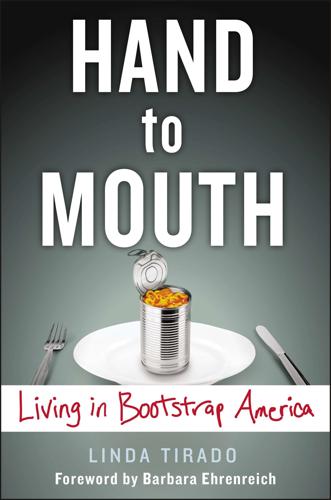
Hand to Mouth: Living in Bootstrap America
by
Linda Tirado
Published 1 Oct 2014
Meanwhile, we spend massive amounts of energy holding down the urge to punch something after the last customer called us an idiot. People don’t have any compunction about insulting service workers, but it’s amazing how quickly they’ll complain about your attitude if you’re not sufficiently good-natured about it. Our jobs are as much emotional labor as they are physical. What they are not, what they are never allowed to be, is mentally engaging. So we’re trying to zombie out to survive. We’re not allowed to deviate from policy even if the policy is kind of stupid and counterproductive. Nobody is interested in our thoughts, opinions, or the contributions we might be able to make—they want robots.

100 Things We've Lost to the Internet
by
Pamela Paul
Published 14 Oct 2021
Against your better instincts, against everything you learned in college, against what you were told to do in professional communications, especially if you’re a woman, you’re going to write “Thanks!” Or even “Thanks!!” Not to do so now bears a marked lack of good will. If you have a problem with that, you can employ a Gmail extension called Emotional Labor, which helps those clinging to their periods “brighten up” the tone of their email—mostly by adding exclamation points. Oh, but it’s a slippery slope. You find yourself questioning each period. You find you are debating whether two or three exclamation marks in a given response are best.

Unf*ck Your Habitat
by
Rachel Hoffman
It’s time for us to change the way we look at domestic work and the people who perform it. By seeing and acknowledging the amount of labor involved, we can start to realize that a more equal division of labor in our own homes is inherently fairer than expecting it all to fall under the umbrella of “women’s work.” Domestic and emotional labor like housecleaning, child-rearing, household management (bill paying, grocery shopping, etc.), and the endless other tasks involved in running a household are labor, unpaid but critical to everyday life. These tasks are not the default responsibility of one gender or the other, just as financial contributions and major household decisions are no longer granted solely to one family member just because of his role within the household.
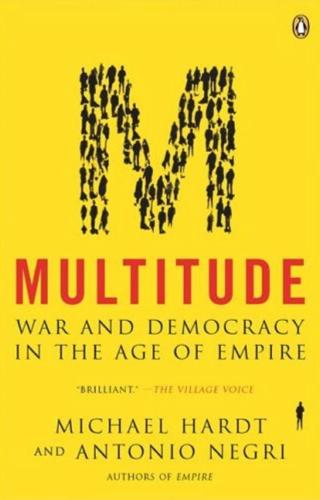
Multitude: War and Democracy in the Age of Empire
by
Michael Hardt
and
Antonio Negri
Published 1 Jan 2004
See also Danièle Kergoat, Françoise Imbert, Hélène Le Doaré, and Danièle Senotier, Les infermières et leur coordination, 1988-1989 (Paris: Lamarre, 1992). 14 On “mothering paralegals,” see Jennifer Pierce, Gender Trials: Emotional Lives in Contemporary Law Firms (Berkeley: University of California Press, 1995), 83-102. On the alienation of emotional labor, see Arlie Russell Hochschild, The Managed Heart: Commercialization of Human Feeling (Berkeley: University of California Press, 1983), 204-41. Hochschild gives statistics of the gender breakdown of jobs that call for emotional labor. 15 This is the primary argument of Doug Henwood, After the New Economy. 16 For an overview of post-Fordism and flexible specialization, see Ash Amin, ed., Post-Fordism: A Reader (Oxford: Blackwell, 1994). 17 See Pascal Byé and Maria Fonte, “Is the Technical Model of Agriculture Changing Radically?”

Sustainable Minimalism: Embrace Zero Waste, Build Sustainability Habits That Last, and Become a Minimalist Without Sacrificing the Planet (Green Housecleaning, Zero Waste Living)
by
Stephanie Marie Seferian
Published 19 Jan 2021
Sarah M., Sustainable Minimalists group member The Consequences of Overbuying An Increased Mental Load If you are reading this book, you may have already come to a crippling realization: owning more results in more to organize, track, maintain, and worry about. Your “mental load,” or emotional labor, describes the total sum of responsibilities required for you to manage your household. Women tend to experience heavier mental loads than men, as the never-ending domestic juggling act of organizing, thinking, planning, and keeping a home afloat continues to be considered a woman’s job.15 While heavy mental loads are linked to feelings of distress, emptiness, and lowered life satisfaction,16 buying less and owning less are powerful ways to improve your quality of life.
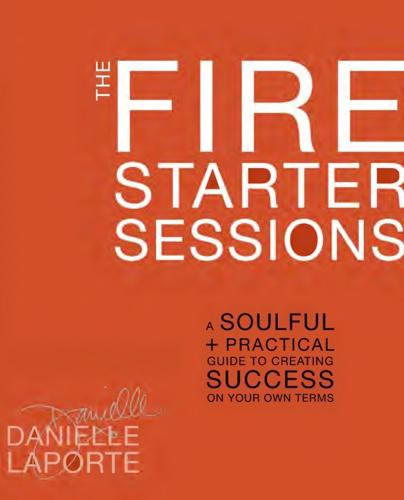
The Fire Starter Sessions: A Soulful + Practical Guide to Creating Success on Your Own Terms
by
Danielle Laporte
Published 16 Apr 2012
—Lady Gaga I have never met someone who is living a bold and successful life—and by successful I mean prosperous, kind, and in touch with the meaningfulness of what he’s doing—who has apologized for being perfectionistic, mercurial, unrelenting, or whatever his slightly controversial hallmark characteristics are. You will always be too much of something for someone: too big, too loud, too soft, too edgy. If you round out your edges, you lose your edge. EMOTIONS ARE MAGNETIC Emotional labor is available to all of us, but it is rarely exploited as a competitive advantage. —Seth Godin If you don’t emote, you’re remote. Emotion is the chemistry of resonance. People, clients, customers, and audiences say Yes! when they can relate to your vibration. True character is having the courage to defy your position and express your emotions.

Blockchain Chicken Farm: And Other Stories of Tech in China's Countryside
by
Xiaowei Wang
Published 12 Oct 2020
At a pearl party, the hostess announces your name to the livestream audience, noting where you are from and details about you. As you watch, you can leave comments for the hostess, joining in the conversation, hearing her reply to you in real time. This form of care and attention is moving. As a viewer, you pay for emotional labor. Hostesses make the person whose oyster is about to be opened feel so, so special. And in a time when you rarely get to feel special, doesn’t it feel so good to hear that someone cares about you? The model of multilevel marketing, with its emphasis on personal relationships and cultivating entrepreneurship, is not new.

Addiction by Design: Machine Gambling in Las Vegas
by
Natasha Dow Schüll
Published 15 Jan 2012
In the 1970s, the sociologist Daniel Bell characterized the postindustrial economy as one driven by the provision of services rather than factory labor, exchanges between people rather than between people and machinery.15 Extending Bell’s insights, Arlie Hochschild argued in the 1980s that the shift from assembly-line production to service provision had been accompanied by a shift from physical labor to “emotional labor” in which “the emotional style of offering the service is part of the service itself.”16 While physical machine labor carries the risk of alienation from one’s body, emotional labor carries the risk of becoming estranged from one’s feelings and affects as they are processed and managed in the marketplace of social relations. Josie, an insurance agent, experiences a similar kind of emotional exhaustion from the labor of reassurance and persuasion that she engages in with her clients.

Addiction by Design: Machine Gambling in Las Vegas
by
Natasha Dow Schüll
Published 19 Aug 2012
In the 1970s, the sociologist Daniel Bell characterized the postindustrial economy as one driven by the provision of services rather than factory labor, exchanges between people rather than between people and machinery.15 Extending Bell’s insights, Arlie Hochschild argued in the 1980s that the shift from assembly-line production to service provision had been accompanied by a shift from physical labor to “emotional labor” in which “the emotional style of offering the service is part of the service itself.”16 While physical machine labor carries the risk of alienation from one’s body, emotional labor carries the risk of becoming estranged from one’s feelings and affects as they are processed and managed in the marketplace of social relations. Josie, an insurance agent, experiences a similar kind of emotional exhaustion from the labor of reassurance and persuasion that she engages in with her clients.
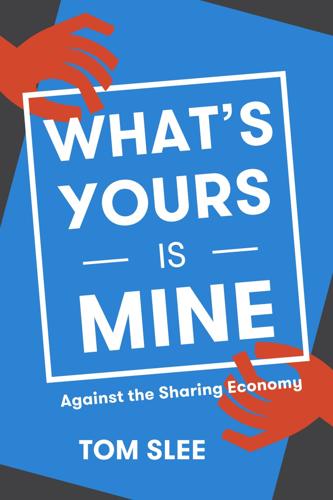
What's Yours Is Mine: Against the Sharing Economy
by
Tom Slee
Published 18 Nov 2015
Sharing Economy reputation systems have become fronts for hierarchical and centralized disciplinary systems, which have nothing to do with notions of “peer-to-peer” reputation, “algorithmic regulation” or regulation with a “lighter touch” through ratings. We trust strangers on Sharing Economy platforms for the same reason we trust hotel employees and restaurant waiters: because they are in precarious jobs where customer complaints can lead to disciplinary action. The reputation system is a way to enforce “emotional labor”; service providers are compelled to manage their feelings and present the face that the platform demands, to become that “friend with a car” or that “neighbor helping neighbors.” It’s the fast food worker’s “Have a nice day” taken to the next step. Sharing Economy reputation systems do not solve the problem of trust.
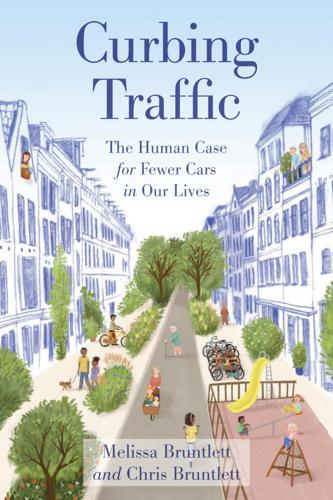
Curbing Traffic: The Human Case for Fewer Cars in Our Lives
by
Chris Bruntlett
and
Melissa Bruntlett
Published 28 Jun 2021
Since returning to full-time work in 2016, Melissa had been walking on the delicate tightrope that was working motherhood, balancing her day job with writing a book in her free time, all while caring for and managing the lives of two young children. During that time, Chris worked from home, bearing some of the parental load and creating better equity in the emotional labor. But the fact remained that since the day Coralie was born, Melissa had done most of the care work required to raise a family, from being a stay-at-home mom for several years to working part-time and balancing her career with the active lives of the kids. But within a couple months of moving to Delft, it felt like some of this weight had been lifted, and the contrast between her former life and her current one became stark and celebratory.

Undoing Border Imperialism
by
Harsha Walia
Published 12 Nov 2013
“Love is always about violating your own attachment to your intentionality, without being anti-intentional.”(32) I have witnessed how communities of color, and even more so queer women of color, transfolks of color, and/or people of color with disabilities, have persistently articulated as well as practiced a politics of revolutionary love. This includes resource redistribution, affinity groups during and between actions, community kitchens, family care support, emotional laboring, and participating in bartering and mutual aid networks. This is not a coincidence. Those who experience an avalanche of oppressions, and cannot rely on the state or market for relief or redemption, know how much we need and depend on one another in order to survive. Indigenous lesbian poet Paula Gunn Allen remarks, We survive war and conquest; we survive colonization, acculturation, assimilation; we survive beating, rape, starvation, mutilation, sterilization, abandonment, neglect, death of our children, our loved ones, destruction of our land, our homes, our past, and our future.

Wordslut: A Feminist Guide to Taking Back the English Language
by
Amanda Montell
Published 27 May 2019
As a result, men’s goals when they talk are to communicate information, while women’s are to form connections. Another, more complex theory suggests that women’s conversational style has developed as a coping strategy that reflects their position in our culture. This argument is inspired by Janet Holmes, who suggests that our society requires women to be the emotional laborers—shoulders to cry on, carriers of sympathetic burdens. So when women get together and talk to each other in a horizontal style, you’re basically looking at a bunch of people all navigating those expectations at the same time, doing a damn good job of it, and enjoying the reciprocation. I think it’s safe to say any woman who’s ever experienced the genuine empathy and solidarity of another woman knows it’s a pretty satisfying feeling.
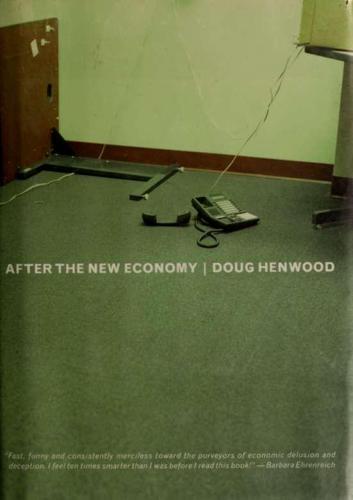
After the New Economy: The Binge . . . And the Hangover That Won't Go Away
by
Doug Henwood
Published 9 May 2005
Jack Grubman:The Power Broker," Business Week, May 15. Engardio, Pete, Aaron Bernstein, and Manjeet Kripalani (2003). "Is Your Job Next?," Business Week, February 3, pp. 50-60. England, Paula, and Nancy Folbre (1998)."The Cost of Caring,"/l««a/!s of the American Academy of Political and Social Science, special issue on emotional labor [also at <www.olin.wusd.edu/ macarthur/working papers/wp-englandfolbre. htm>]. Evans, John P., and James A. Gentry (2000). "Do Strategic Share Repurchase Programs Create Long-Run Firm Value?," unpublished paper. University of Illinois, Department of Finance. Faludi, Susan (1992). Backlash.The Undeclared War Against American Women (NewYork: Anchor Books).
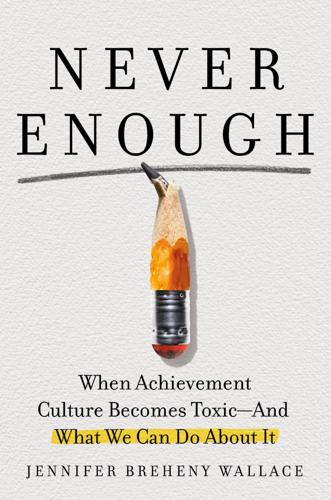
Never Enough: When Achievement Culture Becomes Toxic-And What We Can Do About It
by
Jennifer Breheny Wallace
Published 21 Aug 2023
As Milkie described it to me, safeguarding involves the everyday parenting work of mapping out optimal school activities, hobbies, and social and emotional skills that we hope will improve our children’s life chances and eventual happiness. Safeguarding generally falls to the mother, who is tasked with forging a unique path to success for each individual child. To be sure, many fathers contribute to status safeguarding, but it’s mothers, the researchers note, who continue to perform the bulk of the cognitive and emotional labor for children. This invisible labor involves the minutiae of life—making sure the football cleats still fit (and where you last saw them), insisting on piano practice before the next lesson (and keeping an eye on the time)—as well as anticipating potential problems. When a child missteps, “whether not getting above-average grades, not receiving appropriate attention from teachers, or not seeming happy with friends,” Milkie writes in her study, a safeguarding mother might intervene by hiring a tutor, requesting a parent-teacher conference, or finding a therapist to help bolster social and emotional skills.

Seeking SRE: Conversations About Running Production Systems at Scale
by
David N. Blank-Edelman
Published 16 Sep 2018
What free time remains is dedicated to cooking, sci-fi, permadeath video games, and Satanism. 1 Emotional labor refers to work managing the emotions of others, such as being expected to keep up a smile or politely respond to aggression. This work is often expected of retail and service employees, particularly women, and is usually uncompensated. 2 Jennifer Davis on hero culture (DevOpsDays Boston 2014) , John Sawers on emotions (DevOpsDays Boston 2017), Emily Gorcenski on strength and emotional labor (SREcon17 EMEA), Jaime Woo on psychological safety (SREcon18 Americas), and many others. 3 Note that there are also many brain disorders that can cause mental symptoms — for example, stroke, Alzheimer’s disease, and traumatic brain injury.

Please Don't Sit on My Bed in Your Outside Clothes: Essays
by
Phoebe Robinson
Published 14 Oct 2021
Act like you’ve seen a beautiful Black person before. If you haven’t guessed by now, I wouldn’t let the stranger take the picture, and he was disappointed. Looking back on it, I could have asked him why he wanted a picture. His answer could’ve been harmless or perhaps it would have turned into a situation where I’d have to do emotional labor and be the “Black experience” that he’d run home and discuss with loved ones and friends. And I just couldn’t take that risk because, on that day, I just wanted to be a girl who was shopping with her boyfriend. I didn’t want to stand out from the crowd, feel exoticized, or be a character in someone’s mini awakening about Blackness.
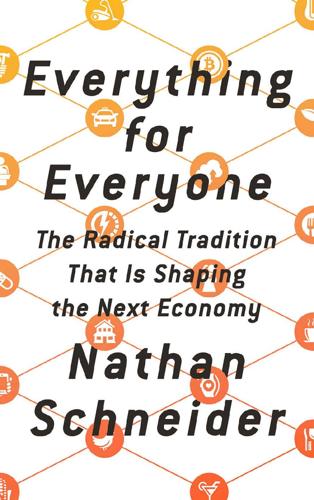
Everything for Everyone: The Radical Tradition That Is Shaping the Next Economy
by
Nathan Schneider
Published 10 Sep 2018
I joined a tour of a state-of-the-art fab-lab, in which “at-risk” youth were making everything from coasters to an electric car with precision mills and, yes, 3D printers. Something to write home about, maybe. To get back to my inflatable mattress that night, I caught a ride with Tawana Petty. She was an organizer of the conference, an activist and mother with a relentless smile that she said she had learned as part of the emotional labor expected of her while serving fast food. Now, she does research and education on “data justice.” I listened from the back seat as she, in the passenger seat, caught up with a visiting friend behind the wheel. She described a moment in which she’d been called to speak before UN representatives about the water crisis.
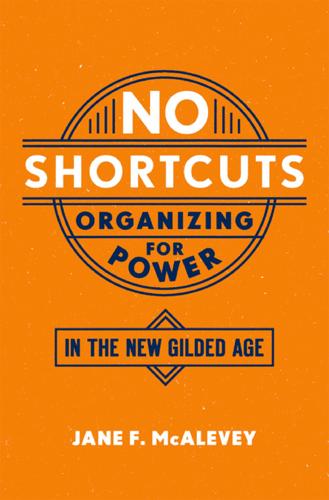
No Shortcuts: Organizing for Power in the New Gilded Age
by
Jane F. McAlevey
Published 14 Apr 2016
Drawing an analogy to the industrial-era factory of the past, but updating the shop floors and the workforces that occupy them, I focus on cases in the dominant industries of today’s service economy: health care and education, both fields in which many workers with a wide range of skill and education constantly collaborate in the same buildings. Unlike those of the past, the workforces in my case studies are mostly comprised of women (many of them women of color), and in the work they do, emotional labor and technical skill are equally crucial to success. The transition from a manufacturing to a service economy radically altered traditional worker-consumer relations. Are there strategy implications here for unions? Does the strike strategy of a female-dominated, service-oriented workforce look different from the old one?

Laziness Does Not Exist
by
Devon Price
Published 5 Jan 2021
Manya Whitaker, “The Unseen Labor of Mentoring,” Chronicle of Higher Education, June 12, 2017, https://chroniclevitae.com/news/1825-the-unseen-labor-of-mentoring. 7. Marlese Durr and Adia M. Harvey Wingfield, “Keep Your ‘N’ in Check: African American Women and the Interactive Effects of Etiquette and Emotional Labor,” Critical Sociology 37, no. 5 (March 2011): 557–71. 8. Social Sciences Feminist Network Research Interest Group, “The Burden of Invisible Work in Academia: Social Inequalities and Time Use in Five University Departments,” Humboldt Journal of Social Relations 39, no. 39 (2017): 228–45, http://www.jstor.org/stable/90007882. 9.

Sunbelt Blues: The Failure of American Housing
by
Andrew Ross
Published 25 Oct 2021
“Eight or nine of them live in a two-bedroom apartment, with air mattresses and sleeping bags and a couch, and they rotate through who gets the bed on certain nights,” she tells me. “They only have one bathroom, so they have to ration shower time, and their clothes are all in trash bags.” These grim living conditions make for a stark contrast with the cheery emotional labor required from cast members. Much of their work lies in producing a “magical” customer experience, even when dealing with guests frustrated by long lines and the rigid rules of conduct on rides. The anger of visitors has to be absorbed or redirected by the protective shield of the employee’s Disney smile and upbeat persona.
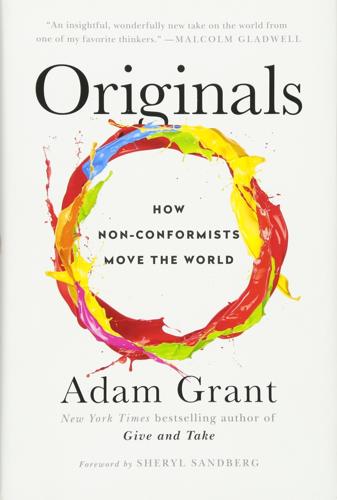
Originals: How Non-Conformists Move the World
by
Adam Grant
Published 2 Feb 2016
surface acting burns us out: Alicia Grandey, “When ‘The Show Must Go On’: Surface Acting and Deep Acting as Determinants of Emotional Exhaustion and Peer-Rated Service Delivery,” Academy of Management Journal 46 (2003): 86–96; Ute R. Hülsheger and Anna F. Schewe, “On the Costs and Benefits of Emotional Labor: A Meta-Analysis of Three Decades of Research,” Journal of Occupational Health Psychology 16 (2011): 361–89. To prepare citizens: Aldon D. Morris, The Origins of the Civil Rights Movement: Black Communities Organizing for Change (New York: Free Press, 1984); Rufus Burrow, Jr., Extremist for Love: Martin Luther King Jr., Man of Ideas and Nonviolent Social Action (Minneapolis, MN: Fortress Press, 2014); Martin Luther King, Jr., “Remarks in Favor of the Montgomery Bus Boycott,” June 27, 1956, accessed on February 24, 2015, at www.usnews.com/news/blogs/press-past/2013/02/04/remembering-rosa-parks-on-her-100th-birthday; Martin Luther King, Jr., interview with Kenneth Clark, accessed on February 24, 2015, at www.pbs.org/wgbh/amex/mlk/sfeature/sf_video_pop_03_tr_qt.html.

Mindf*ck: Cambridge Analytica and the Plot to Break America
by
Christopher Wylie
Published 8 Oct 2019
At the workplace, “casual flirting” with female secretaries now imperiled your job, and talking about the “thugs” in the African American part of town could get you shunned by peers. These encounters were often uncomfortable and threatening to their identity as “regular men.” Men who were not used to moderating their impulses, body language, and speech began to resent what they saw as the unfair mental and emotional labor it took to change and constantly correct how they presented in public. What I found interesting was how similar the discourse that emerged from these groups of angry straight men was to liberation discourse from gay communities. These men began to experience the burden of the closet, and they did not like the feeling of having to change who they felt they were in order to “pass” in society.

Golden Gates: Fighting for Housing in America
by
Conor Dougherty
Published 18 Feb 2020
Laura was confident and argumentative like Sonja, but this was not to say they were exactly alike. Sonja’s roughness bordered on performance art and she described SF BARF as a “do‐ocracy” where anyone could work on anything they wanted, so long as they actually did it. This wasn’t just a motivator. It was a means of self-protection that prevented Sonja from having to endure the emotional labor of organization building by discouraging anyone who wasn’t self-motivated from sticking around. Nothing annoyed Sonja more than people who showed up to meetings expecting to be praised for their ideas. She once said she didn’t understand why women complained about “mansplaining,” not because mansplaining didn’t annoy her, but because she would conversationally decapitate anyone who even started down that path so she never experienced it for long and therefore didn’t dwell on it.
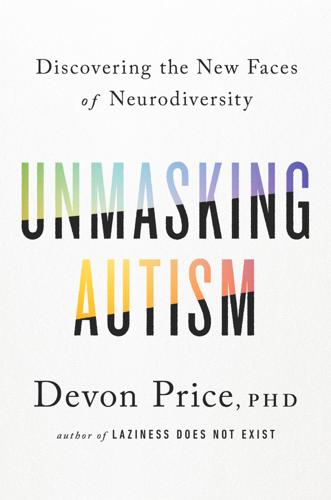
Unmasking Autism: Discovering the New Faces of Neurodiversity
by
Devon Price
Published 4 Apr 2022
When business is good, Reese can earn enough money to pay her monthly bills after just a couple of days of dancing, and she can take days or weeks off on relatively short notice. I know several other Autistic sex workers personally who got into the field because of the flexibility it allowed them. Plus, emotional labor and masking as friendly and interested is recognized as part of the work of sex work. Clients are often willing to pay a high price for an authentic-feeling social and emotional experience. For Autistic people who have been obliged to mask all their lives, it can be really empowering to be paid for that skill—and to be able to afford enough down time to recover from having to do it.
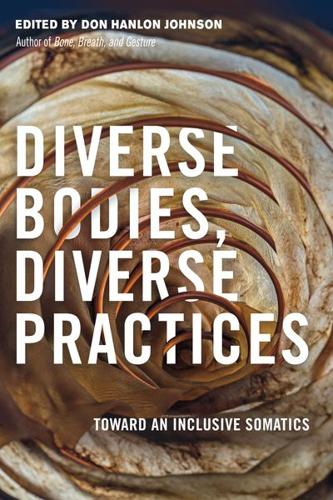
Diverse Bodies, Diverse Practices: Toward an Inclusive Somatics
by
Don Hanlon Johnson
Published 10 Sep 2018
She elaborates further, “Whenever the need for some pretense of communication arises, those who profit from our oppression call upon us to share our knowledge with them. In other words, it is the responsibility of the oppressed to teach the oppressors their mistakes.” I was subconsciously expecting, hoping for a corrective experience in which I would be seen and the white people in the room would see themselves, within the construction of whiteness. The emotional labor required to orchestrate this is exhausting. Ultimately, I did not get this corrective experience from them, just as I did not get it from within my own biological family. I found it myself, in the realization and release. I find it in forgiveness and continuing to show up in these spaces. So while it is not my responsibility to teach, it’s also one that I haven’t been able to put down entirely.
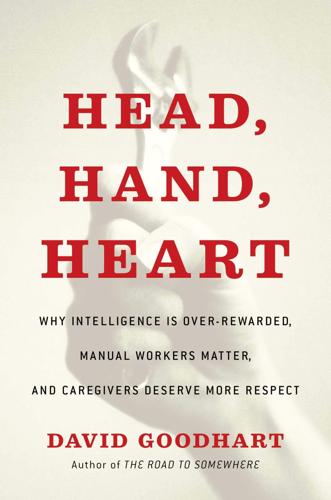
Head, Hand, Heart: Why Intelligence Is Over-Rewarded, Manual Workers Matter, and Caregivers Deserve More Respect
by
David Goodhart
Published 7 Sep 2020
If we attached more value, both in terms of prestige and income, to the caregivers and the skilled trades, income would naturally spread more evenly across society and economic growth would be more consistent and stable. Western rationalist philosophy, from Plato to Descartes, reinforced by Christianity, has tended to privilege the mind as the source of immutable truth and understanding and looked down upon the body as the source of irrational appetite and moral inconstancy. For this reason embodied, emotional labor like nursing and care for the young and old has suffered lower prestige, along with the fact that they are overwhelmingly female occupations. And all too often, cognitive ability and meritocratic achievement is confused with moral worth. The Latin root of “meritocracy”—meritum, for “merit”—means worthy of praise.

The Equality Machine: Harnessing Digital Technology for a Brighter, More Inclusive Future
by
Orly Lobel
Published 17 Oct 2022
Around the world, women are collapsing under the pressures of excelling in their careers, overcoming biases, and breaking glass ceilings while simultaneously holding their families and households together. Women still perform a disproportionately high load of caregiving, housekeeping, and homemaking. We are expected to engage in emotional labor, in social connectivity, and in child-rearing, cooking, cleaning, and entertaining. This work has for too long been invisible and unpaid. Men also are harmed by these iterations of gender inequity. Stereotypes and toxic masculinity norms hinder men from taking paternity leave and set rigid expectations about men’s desires, permitted emotions, passions, career paths, and roles.
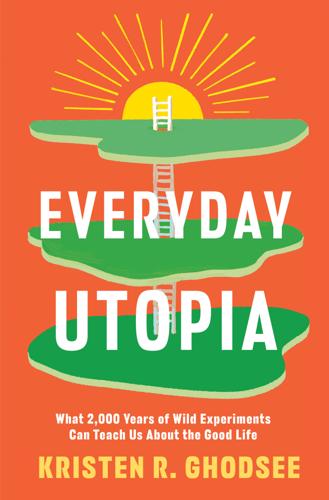
Everyday Utopia: What 2,000 Years of Wild Experiments Can Teach Us About the Good Life
by
Kristen R. Ghodsee
Published 16 May 2023
Parents—especially mothers—were overwhelmed and exhausted. Women around the globe woke up and realized that decades of feminism had done little to reverse the social expectation that mothers, sisters, wives, and daughters should provide care for young children, elderly parents, and sick relatives, as well as perform the emotional labors that hold families together in times of crisis: planning Zoom birthday parties, organizing virtual funerals, or lending a sympathetic ear to support the psychological health of loved ones far and near. I wondered: How many women with “wise and excellent” souls were crushed under the avalanche of nurturing suddenly required of them?

Strangers in Their Own Land: Anger and Mourning on the American Right
by
Arlie Russell Hochschild
Published 5 Sep 2016
Houck, “The Reckoning: Oil and Gas Development in the Louisiana Coastal Zone,” Tulane Environmental Law Journal 28, no. 2 (2015), 185–296. 66they were managing strong feelings of anxiety, fear, and anger In The Managed Heart: Commercialization of Human Feeling (Berkeley: University of California Press, 1983), I use the term “emotional labor” for the paid work of trying to feel or appearing to feel the required feelings for the job, and applied it to such paid service jobs as flight attendant, care worker, nurse, and salesperson. I used the term “emotion work” for the same emotion management we do for free at home, or anywhere else outside of paid work. 67Louisiana is one of the most permissive states in the nation The state does not regulate “on-premises hours” (i.e., last call) for establishments that serve alcohol (though parishes can establish their own).

The Job: The Future of Work in the Modern Era
by
Ellen Ruppel Shell
Published 22 Oct 2018
Where I teach, students are advised to prepare for interviews with an “elevator speech” that at once showers praise on their potential employer and reflects their ability to conform to the company’s presiding “corporate culture.” Concocting such “interpersonal chemistry” requires a substantial outlay of what Sharone calls “hard emotional labor” to sustain “a whole new persona.” This includes meticulously crafting a rhetorical style that projects a passion for career goals that match the objectives of the employer. Job seekers must portray themselves as team players also willing to take initiative while at the same time conveying an undying enthusiasm for whatever service or product the company delivers.
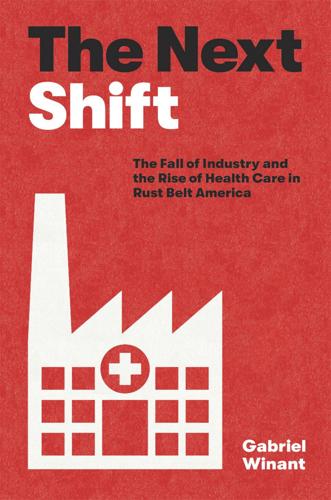
The Next Shift: The Fall of Industry and the Rise of Health Care in Rust Belt America
by
Gabriel Winant
Published 23 Mar 2021
“Doctors and nurses, defending their place in the social hierarchy, shift it onto the shoulders of aides, orderlies, and attendants—who do for strangers, day in and day out, what we can only just conceive of doing in emergencies for the people we love.” Feminist thinkers, meanwhile, engaged the question of care more systematically: sociologist Arlie Hochschild developed the idea of “emotional labor” in the early 1980s; political theorist Joan Tronto asked in 1987, “Where does caring come from? Is it learned in the family? If so, does an ethic of care mandate something about the need for, or the nature of, families? Who determines who can be a member of the caring society? What should be the role of the market in a caring society?”

Nothing Personal: My Secret Life in the Dating App Inferno
by
Nancy Jo Sales
Published 17 May 2021
“They’re all like, ‘Woe is me, I need comfort,’” she said. “They literally are just looking for a device wife.” I started to suspect, with the Boy from Queens, that it was also stroking his ego, to have me at his beck and call. It made me see how these virtual relationships with men demanded from women the same, unequal amount of emotional labor as actual relationships. And so, without ever having met this guy, I was already resenting him for bugging me—he was even starting to piss me off. So why did I answer him, you ask? Because I wanted to meet him to see if I wanted to have sex with him. And I had also been socialized to be polite to men, even the annoying ones.

Make Your Own Job: How the Entrepreneurial Work Ethic Exhausted America
by
Erik Baker
Published 13 Jan 2025
But not everyone wanted to live the life of a tortured artist while working in a corporate R&D department.71 The prospect was even less attractive in feminized service occupations, like flight attending, waitressing, and nursing, where the atmosphere of “no-collar” informality only exacerbated pressure to perform what the sociologist Arlie Russell Hochschild called “emotional labor” in 1983. It was in the context of “caring professions” such as nursing that social scientists first developed the concept of “burnout” in the 1970s and 1980s. By 1997, the influential burnout researcher Christina Maslach was prepared to diagnose a “crisis” of burnout throughout American workplaces.
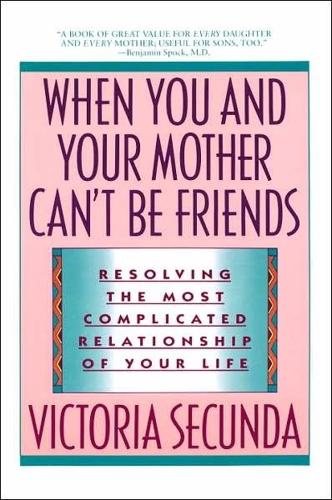
When You and Your Mother Can't Be Friends: Resolving the Most Complicated Relationship of Your Life
by
Victoria Secunda
Published 30 Mar 1990
While such emotional stereotyping handicaps both sexes, it is much harder on girls, who are damned if they remain too attached to mother, because they risk becoming emotionally engulfed, and damned if they reject her entirely, because they risk both devaluing their ability to connect and inviting social derision. If, in addition to this division of emotional labor, you factor in the mother-son incest taboo—heavy with sexual implications, fraught with the danger of son-father jealousies—it becomes even more urgent for Mom to establish boundaries between herself and her son. Mother cannot risk causing a rift between father and son, nor can she jeopardize her role as wife by making her son Dad's rival, and so she sees to it that neither occurs by encouraging the son to be "manly"—to play rough-and-tumble games, to be outdoors, to not be "wimpy," to be less earth- and hearthbound than her daughter.
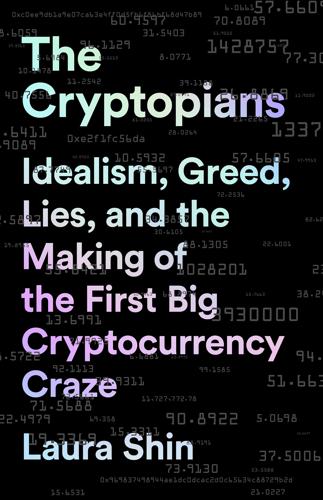
The Cryptopians: Idealism, Greed, Lies, and the Making of the First Big Cryptocurrency Craze
by
Laura Shin
Published 22 Feb 2022
She would say her job was uniquely hard, no one appreciated her, and if her colleagues didn’t start valuing her more, she would quit so people would realize she had saved the foundation. Because she was constantly dumping her problems, the staff felt that phone chats with Ming were therapy for her and emotional labor for them. One person observed to Ming’s boyfriend, Casey, that she complained about other people a lot. He was surprised when Casey agreed that she got into crazy spin mode and it was hard to get her out. He thought to himself, Well, you’re banging her. (Casey, a developer, worked on Ethereum but was paid nothing or a nominal amount like $1 a year.)

Hard Landing
by
Thomas Petzinger
and
Thomas Petzinger Jr.
Published 1 Jan 1995
In groups of 150, employees were dragged groaning and shrugging into classes for a few days at a time, but as one would predict with any expensive and well-designed mass-indoctrination program, they emerged from the experience saying that it was, well, okay … pretty interesting, in fact. Employees were guided through role playing and exercises in imagination, all to educate them in how the customer felt and how to accept responsibility for solving a passenger’s problems. They were trained to think of themselves as “emotional laborers,” no different from nurses or welfare workers, for among the 450 passengers checking in for a fully loaded 747 flight, they were told, there will be a businessman, tired and obsessed by a particular problem; a woman with two children joining her husband abroad, anxious about going to a new country, perhaps worried about the house, schools, and so on.
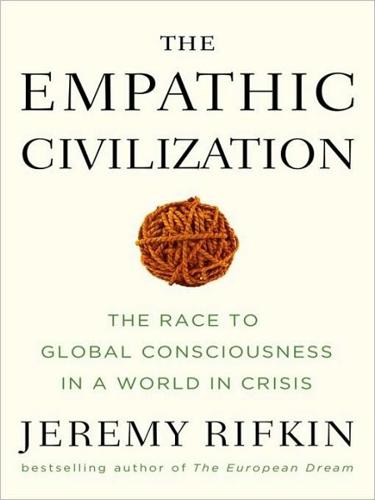
The Empathic Civilization: The Race to Global Consciousness in a World in Crisis
by
Jeremy Rifkin
Published 31 Dec 2009
The introduction of the automobile, the electrification of homes and the advent of mass-produced home appliances and other household goods freed women, at least partially, from the backbreaking tasks of providing all of the necessities of life for kin. Steam power and later electricity also shifted manufacturing, logistics, and services from physical to mental and emotional labor, allowing women to take their place in the factories and front offices of modern commerce. While their talents and skills were less fully employed than men’s and they were paid only a fraction of the compensation, the emergence of the semi-independent female wage earner cannot be exaggerated in the historical shift in gender relations.